Tour stars set to sparkle at the Asia-Pacific Diamond Cup
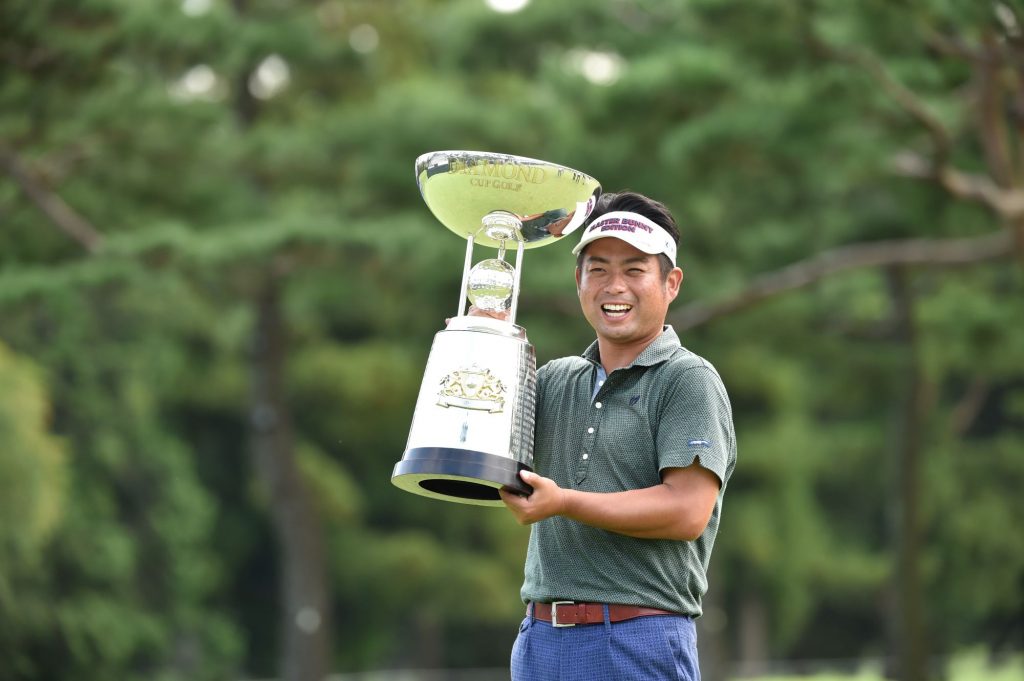
Chiba prefecture, Japan, May 4: The leading players from the Asian Tour are set to light up the Asia-Pacific Diamond Cup when they return to the Land of the Rising Sun next week.
The Asia-Pacific Diamond Cup is the Tour’s first stop in Japan this season and promises to showcase the best talents from the region with the event being sanctioned by the Asian Tour and Japan Golf Tour Organisation (JGTO) again.
The Sobu Country Club, which is located in the Chiba prefecture on the outskirts of Tokyo, will welcome over 50 winners who have won on the Asian Tour.
Eight past champions including defending champion Yuta Ikeda of Japan, Chinese Taipei’s Chan Shih-chang and Thai veteran Prayad Marksaeng will also tee up at the ¥150,000,000 (Approx. US$1,338,067) event.
Chan is one of the contenders looking forward to another good showing at the Asian-Pacific Diamond Cup.
It was at the same event in 2016 where he won his second Asian Tour title to end the year in a career high of fourth position on the Order of Merit then.
“The Asia-Pacific Diamond Cup holds lots of fond memories for me. I won twice that year and that victory in Japan was special as I also became a multiple winner that year. I look forward to going back and let’s see if I can do it (win) again,” said Chan.
The Asia-Pacific Diamond Cup is supported by four key stakeholders. They are Mitsubishi Corporation, Kansai Television, Asia Pacific Golf Confederation and Japan Golf Association.
With the involvement of the Asia Pacific Golf Confederation, the tournament has welcomed a large number of amateurs over the years.
This year, 10 amateurs, including Singapore’s James Leow, India’s Anant Singh and China’s Lin Yuxin will be part of the field.
The Asian Tour was a co-sanctioning partner of the Asia-Pacific Panasonic Open from 2008 to 2013 before the event was renamed as the Asia-Pacific Diamond Cup in 2014.
Ends.
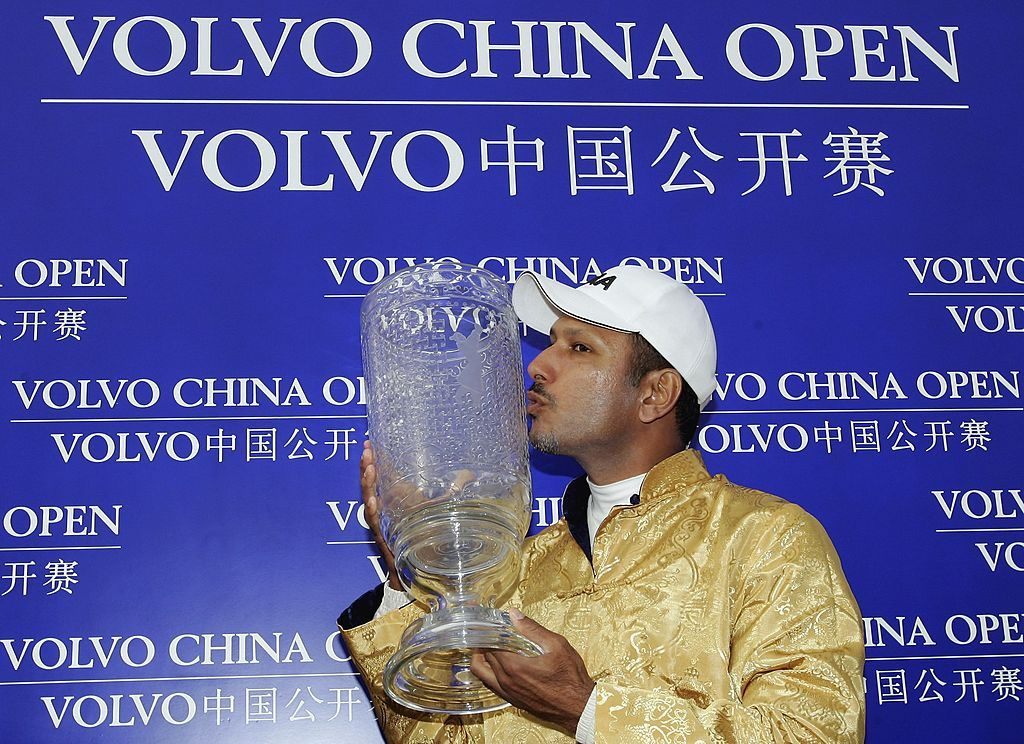
With the Volvo China Open making its return to the Asian Tour schedule again this week, Swamy goes on a nostalgic drive back to the past when India’s Jeev Milkha Singh won the event in 2006.
By V Krishnaswamy (@Swinging_Swamy)
Swamy is one of India’s leading sports writers, who has covered over 20 Majors and 250 international golf tournaments.
Following Jeev Milkha Singh’s fortunes at the 25th edition of the Volvo China Open’s brought back a flood of memories about this great champion.
It was the summer of 2006 when Jeev ended a seven-year drought by winning the then US$ 1.8 million Volvo China Open by a single stroke over Gonzalo Fernandez-Castano of Spain. I was the only Indian journalist at the event.
Jeev had been winless since the 1999 Lexus International on Asian Tour. The event then did not count towards the World Rankings.
Jeev had been second seven times since then and he also had 23 top-10s in the period. But a win kept eluding him.
Back home in India, a new crop of stars had emerged – Gaurav Ghei and Jyoti Randhawa among them; and Arjun Atwal had returned from the US and was regularly playing in Asia from the mid-1990s.
Only a couple of years earlier, Rahil Gangjee had won a title in his rookie year in 2004 and in 2005, Shiv Kapur made big waves with his triumph at the Asian Tour’s season-ending Volvo Masters of Asia in Thailand.
I had to fish out a report from my personal archives to recall what Jeev had told me after the win that week. He said, “I just can’t explain this feeling, it’s been a long seven years.”
He added: “I’ve let so many tournaments go in the last few years and went in to today with reverse psychology, thinking that if I didn’t win, it didn’t matter.”
Jeev started the final day one shot behind the leader, David Lynn. The Indian was tied for second with Prayad Marksaeng, while Fernandez-Castano and Paul Casey were tied fourth another shot behind.
Jeev started the final day with a bogey but got that shot back with a birdie soon after on the third hole.
He caught up with Lynn by the seventh hole and when the Englishman dropped a shot on nine, Jeev was the leader at the turn at 10-under. Lynn caught up again on 10, but his bogey on 13 was costly.
I still remember it was the birdie on the 14th at the Beijing Honghua International Golf Club that set Jeev on the road to victory. He was now two clear of the field and was consistent with pars over the next three holes. Meanwhile Lynn dropped shots on 13 and 15, but Fernandez-Castano came within a shot.
On the 18th the Spaniard needed a birdie to catch up with Jeev, who was behind him. His effort to get that extra birdie forced an errant drive off the 18th and ended with a bogey handing Jeev a two-shot cushion with one hole to play.
“When I saw him (Fernandez-Castano) bogey the 18th, I decided to play it safe and not even go for the flag,” said Jeev, who bogeyed the 18th and still won by one at 10-under 278. Fernandez-Castano was second, Lynn was third and Casey was Tied-fourth.
When he finally got time to reflect on the win after his duties with press Conference, TV interviews, photos with staff and sponsors, Jeev got emotional and looked totally drained.
Who were the other Indians that day? Amandeep Johl finished T20th, Harmeet Kahlon was T-54th and Rahil Gangjee was T-60, while Shiv Kapur and Gaurav Ghei had missed the cut. The next morning, all of us left for Shanghai for the next event, the Asian Open.
The ever-gracious Jeev got all the Indians together in Shanghai – and invited all the players and some local friends to dinner at an Indian restaurant and he made sure I was there.
At Shanghai, he gave another example of his sportsmanship, by calling a penalty on himself while taking a shot from a lake and finished tied-26th. But for that penalty, he may have been close to Top-10.
That Volvo China win also took him to the top of the Order of Merit, which he ended up winning. He had been 314th (thank you, www.owgr.com) the week before and he rose to 194th and kept climbing there on.
With the burden of winning now gone, Singh won three times more that year – the Volvo Masters of in Valderrama to complete a Volvo double and added two titles in successive weeks in Japan (Casio World Open and Golf Nippon JT Series).
Thee wins in a six-week stretch and one third (Hong Kong Open) and 17th at HSBC Champions saw Jeev rising to 39th in the world and just as Christmas came around, the postman delivered the Masters invite to his home in Chandigarh.
When the last event of the 2006 season came around in Thailand, I was in Doha for the Asian Games, where India’s budding amateur stars, Anirban Lahiri, Gaganjeet Bhullar, Chiragh Kumar and Joseph Chakola (who now manufactures golf apparel) were winning a team silver.
With his Order of Merit win assured, Jeev spoke to me to ask if I could come to Bangkok to celebrate the win. I missed the closing ceremony in Doha and landed in Bangkok on the third day of the event and had a great celebration over the weekend.
It does not stop there. When the Masters invite came in the mail, Jeev again called up to invite me (and another journalist friend, the Dubai-based Joy, who had also flown into Bangkok) to come to the Augusta National as it would be the first time an Indian would play at the Masters.
He ensured accommodation for us along with his family and it was the beginning of my love affair with the Masters, which I have not missed for a decade now.
Jeev has always been a great ambassador for Indian sport and golf. One would love to see him win yet again, and maybe in China this week, where at one stage he was three-under (actually the scoreboard showed four-under) but ended at one-under with a double on 18th at the Genzon Golf Club. There are three more days to go.
Come on, Jeev. Do it again.
*Singh opened his account at the 2019 Volvo China Open with a one-under-par 71 to trail the leaders by six shots in tied-69th place.
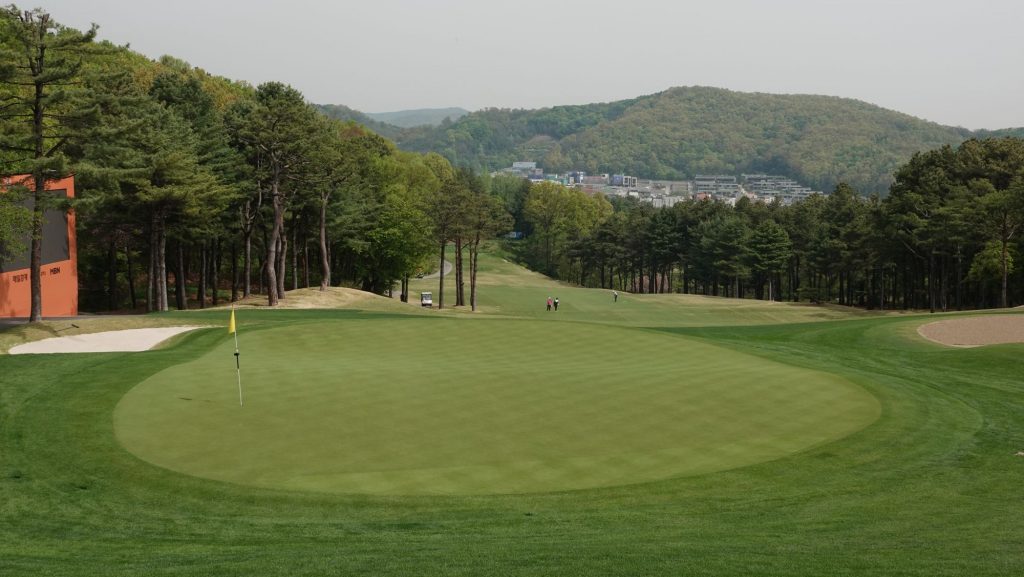
By Olle Nordberg, Former Asian Tour and European Tour professional
A classic course in Asian professional golf, perhaps as memorable as Delhi Golf Club and Hong Kong Golf Club, although not necessarily similar in any way. But still an old-school Asian Tour course in every sense of the word. A course that everyone that played it back in the old days still talk about.
A beautifully landscaped course in the hills on the outskirts of Seoul, and on a nice clear spring-day you will have a great view of the surrounding suburbs from the hills above.
My first time playing the Maekyung at Namseoul was in 1995 on the old APGC Asian Circuit, and as was the case with Delhi Golf Club, my first visit there was also the scene of my best result in the tournament unfortunately. If my memory serves me correctly, I finished in a respectable 14th position that year.
Obviously, I was not a very good student of the game, or at least at adapting to different playing conditions, but don’t be fooled.
Namseoul is not overly long by modern standards, but it is a very strategic course, although maybe more deceptively so than some other courses.
By deceptive I mean that at first glance it is not very narrow, and the rough is not that thick (at least when you play it early in the spring when the Maekyung is always played), so you might feel like you can be a bit casual off the tee. That you can afford to be a bit imprecise with your drives or whatever you tee off with, and not focus properly on the shot at hand.
This would be a big mistake, and not because of what lies you might face in the rough, bunkers or trees awaiting a miscue with the tee-shot, the real problem will lie with your approach to the green from a less than ideal position.
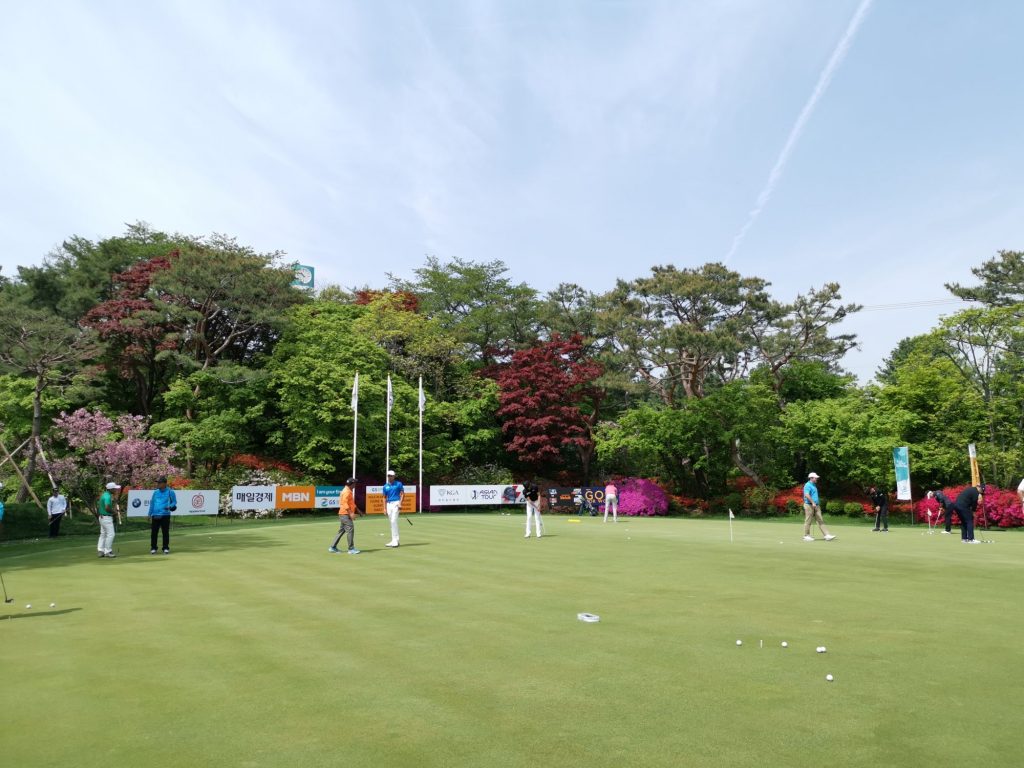
The greens at Namseoul slope almost exclusively back-to-front, and some of them quite severely so. And they can be fast. Or very fast if you take the slope into consideration, coming from the wrong side of the hole.
Depending on how dry the weather is or has been, they can also be firm which is not an easy combination.
Control of approach shots is key, both when it comes to distance and direction. You will need very precise iron-shots into the greens in order to shoot good scores here. It is imperative that you place the ball within, say a 90-degree angle (or pie-shape) short of or below the hole, if you are going to be able to consistently have good opportunities to make putts.
Putts from above the hole or even some sidehill putts, will inevitably result in come-back attempts you wish you didn’t have. Even from normally makeable distances.
The advice here has always been, that it is often better to miss a green short than having a putt from the back of the green or wrong side of the hole. A chip or pitch uphill from short of the green is usually a much easier proposition for an up-and-down on these raised-up greens.
Elevation will also be a factor some holes, as the course is perhaps the hilliest on the Asian Tour schedule. On a few of the holes with very elevated greens like number 13, it can be difficult to keep the ball short of the hole even though most players will have no more than a wedge left for the second shot. The ball will be coming in on a flatter trajectory than usual because of the elevation, which will make it more difficult to stop it quickly.
The final hole is also playing quite severely uphill on the second shot, but the difficulty of the hole does not end there. The two-tiered green can be absolutely diabolical depending on where the pin is placed.
As with the rest of the greens it slopes acutely back to front, and with the added steep tier in the middle, it makes it much more difficult when pins are on the back portion as they usually are on the weekend.
Coming up a bit short and leaving the ball on the lower tier with your approach, you are facing a putt with the possibility of the ball coming back to your feet if you do not give it enough pace. Hit it too firmly and you could find yourself with a six-footer coming back down the hill, which if you miss the hole with in the come-back attempt, you could end up back down on the lower tier where you started. This has all been done in the past.
Miss the 18th green long with the approach, and you will need deft touch in order to keep your chip on the top plateau. Otherwise it will run all the way down to the front of the green, where you will be facing the scenario in the paragraph above.
All this makes for a potentially dramatic finishing hole, a two-shot swing on 18 is a very real possibility as we saw last year, and not only if one player makes a birdie.
The spectators will be out in full force on the weekend, and there could be thousands of people around the 18th green watching what I think is one of the most interesting finishing holes on the Asian Tour.
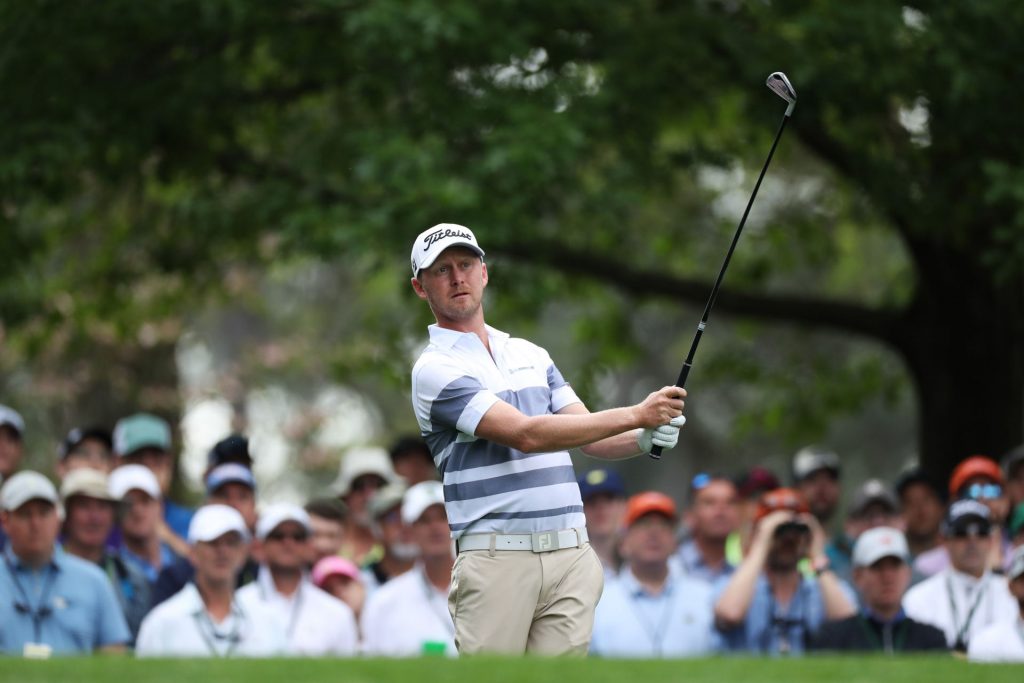
This article was first published on PresidentsCup.com.
When an unfamiliar name popped up on the Masters Tournament leaderboard recently, almost everyone gasped with the same question – “Who is Justin Harding?”
For golf’s fervent followers in South Africa and Asia, Harding is already a familiar name thanks to a combined nine victories on the Sunshine and Asian Tours. Last month, he took another big leap forward in his career by securing his biggest win yet at the Qatar Masters on the European Tour.
The rewards for an amazing five wins over a span of 10 months have included appearances in the WGC-Dell Technologies Match Play, the Masters and other PGA TOUR starts, including the Zurich Classic of New Orleans this week.
Ranked 712th in the world at the end of 2017, he now sits in 45th place and finds himself mixing it up with the big boys and hanging out with potential teammates for the Presidents Cup.
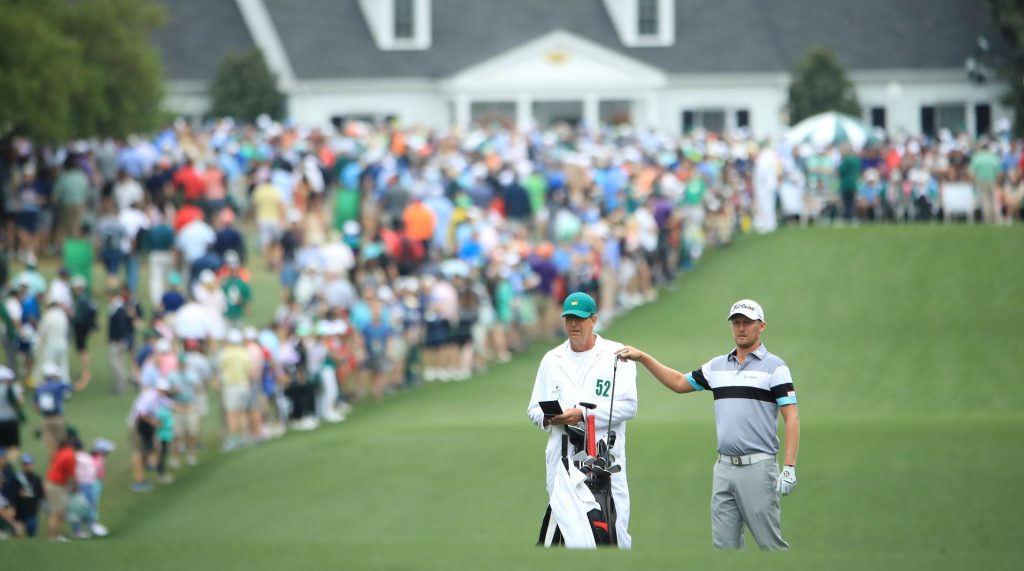
Justin Harding of South Africa
As a child, Harding grew up in Somerset West, South Africa and played junior golf alongside the likes of Branden Grace, a three-time Presidents Cup International Team member. Surfing was his first sporting love but once his father, a businessman, introduced him to golf, Harding was hooked and later developed into a good amateur golfer.
Strangely though, he had earned the nickname “Hack” as a junior player due to his wayward driving and a taboo that observes is to avoid playing with No. 3 golf balls.“I’ve used them a few times and wasn’t successful .… I’ve banned it,” he laughs.
This is Harding’s fifth consecutive week playing on U.S. soil but it isn’t something new as he played college golf at Lamar University in Texas where he majored in business studies. After graduating in 2010, he turned professional and returned home to cut his professional teeth where he would later win the first of his seven titles later that year.
At the Masters, the unassuming South African didn’t hack it around as he produced a measured performance to finish a commendable T12 which guaranteed a return trip in 2020. It also made the golfing world sit up and take notice of his talent.
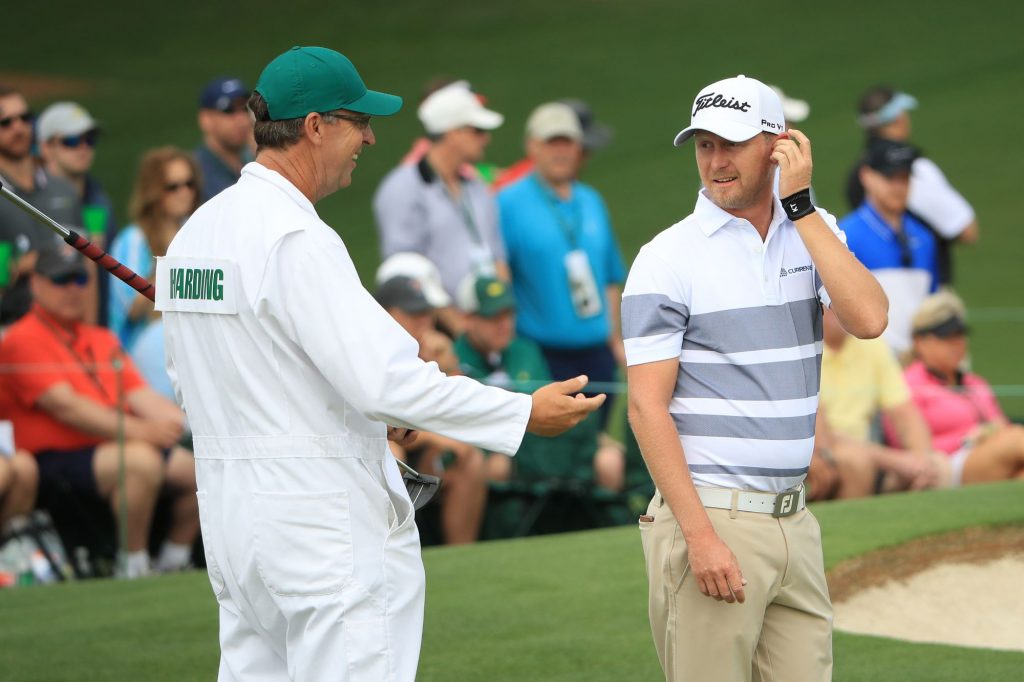
Justin Harding of South Africa
Grace, who is teaming up with Harding in the Zurich Classic, isn’t surprised to see Harding showing up on golf’s biggest stage. “He’s very sneaky and streaky,” said Grace.
“He’s always been like that. That’s why he’s got the nickname ‘Hack’. He’s not always as straight off the tee but he gets it going. He’s really good with wedges and a putter in his hand, he’s really deadly and that’s what you need out here. He’s a hell of a grinder.
“I’ve known Justin for like forever. Obviously when you turn pro and you go your separate ways … but it’s nice to be able to get together now and play on the big scene together. He’s a great golfer and obviously we all know the last two years that he’s had, and it’s great to have him out here playing.”
Harding’s recent success has made him a genuine contender to qualify for the International Team for the Presidents Cup against the United States at Royal Melbourne Golf Club, Australia from December 9-15. With countryman and idol, Ernie Els captaining of the squad, Harding hopes to book his seat on the plane to Australia.
As a 17-year-old, he was amongst the throngs of fans gathered at Fancourt when South Africa hosted the Presidents Cup in 2003. There, he witnessed the historic showdown up close where Els and Tiger Woods battled it out like gladiators in sudden-death which ended in a stalemate following three extra holes played in near darkness.
“I went up to it and watched it first-hand. Watching Tiger and Ernie going against each other in the dark was pretty special,” said Harding.
“It’s an opportunity of a life time and I like to not let it slip. There are so many really good players and the team will be strong regardless.”
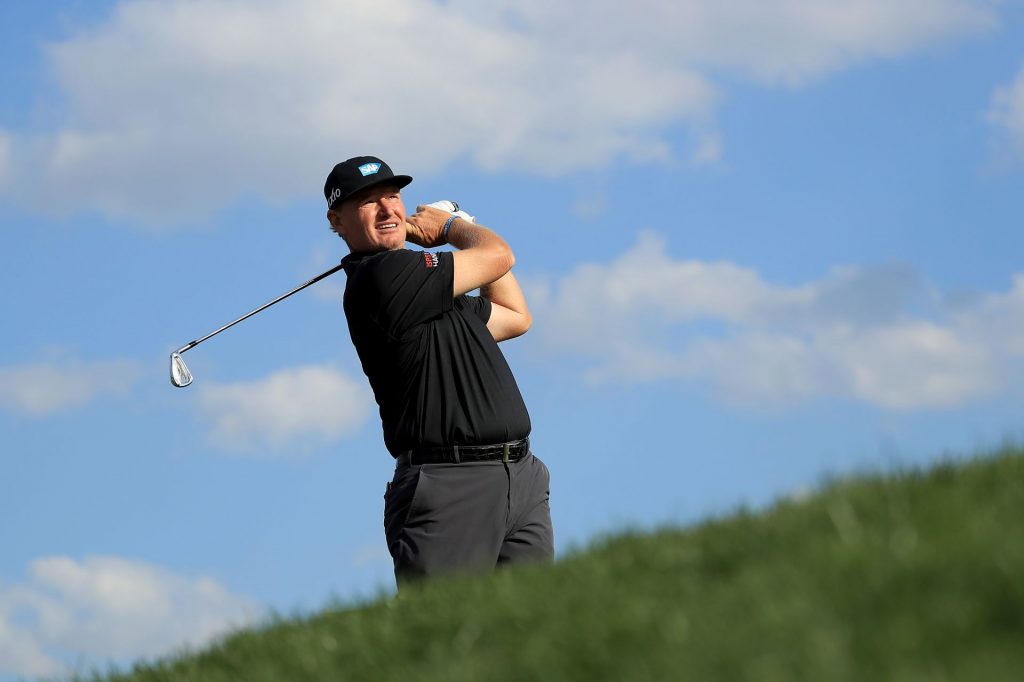
Ernie Els of South Africa
Els likes what he has seen from Harding after playing several rounds together during the past year. “Incredible story,” said the South African legend. “In less than 18 months, he’s come from absolutely not having a card on the Asian Tour, to winning on the Asian Tour, winning in Europe and finishing 12th at the Masters. And he’s got a great game obviously. He can win worldwide and he’s a great wind player. He could be a great asset to our team.”
Trevor Immelman, who is one of the captain’s assistants, has followed Harding’s career closely as they hail from the same hometown. “It’s a huge thrill for me to see him really starting to break through,” said Immelman, who is a Masters champion.
“In South Africa we’ve known about him for a few years now. Guys that know him have been waiting for him to kind of find his voice, so to speak, in the international game. It’s great to see him starting to compete so well in Europe and win in Qatar and transition that game straight here to the States. I mean, his first Masters, the guy finishes tied for 12th.
“He really doesn’t have too many weaknesses, and mentally what’s exciting is he’s really tough. He wants to play well and won’t be intimidated by anybody. I think it’ll be awesome if he manages to make this team.”
Harding reveals golf drives him to excel as success or failure in the game is totally dependent on his own attitude and effort. “I was pretty sporty but I like the individual aspect of golf, figuring out the puzzle and not relying on team members. If you get further, you get more rewards for an individual,” he said.
Except for this week which is a two-man team competition, Harding is prepared to grind it out on his own over the next four months before qualifying ends in August for the eight automatic slots for the International Team.
“It’s been a good 12 months, I’ve put up some good results and my golf is on an upward curve,” he said.
“It’s awesome I’ve made it out here on the PGA TOUR but by no means I’ve arrived. I’ve got a lot of work to do before I can put on a jersey (for the Presidents Cup).”
Ends.
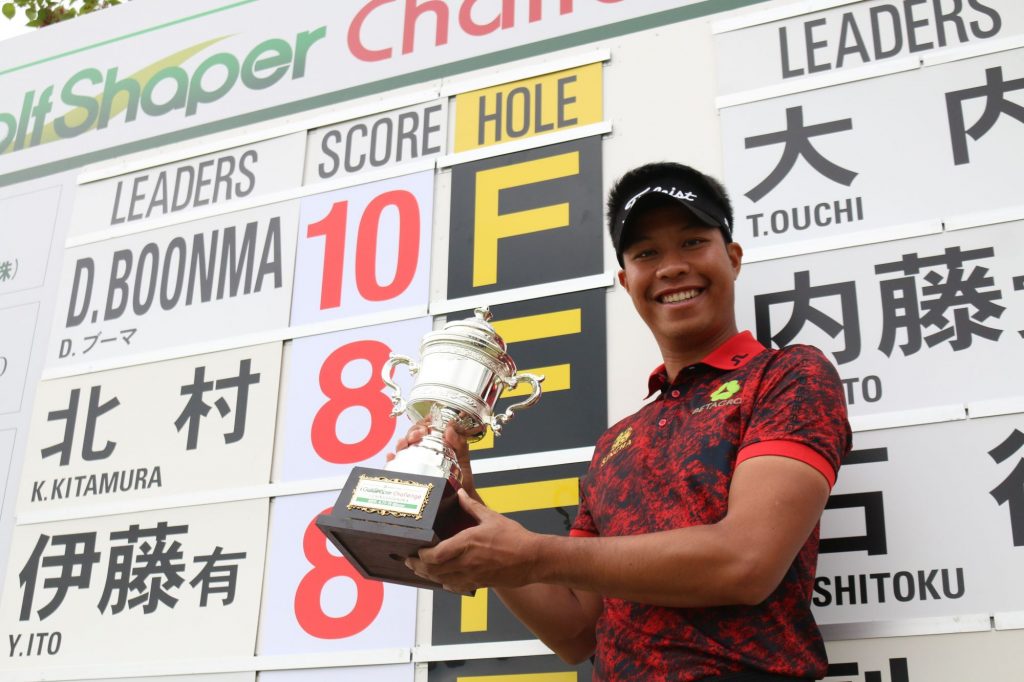
With lucrative events such as WGCs and Majors looming, the Official World Golf Rankings becomes all important. Here we follow the Asian Tour players that are making a charge up the rankings and their quest to play their way into these events via the OWGR.
Thailand’s Kiradech Aphibarnrat, currently ranked number 42 on the OWGR, is already eligible for all the above events.
By Olle Nordberg, Former Asian Tour and European Tour professional
While there was no Asian Tour event last week, four of our members recorded wins on other Tours and picked up valuable points and improving their OWGR rankings: Chikkarangappa S. on the Professional Golf Tour of India (PGTI) improving his ranking to 274 from 312, Danthai Boonma on the Japan Challenge Tour moving to number 281 from 358, Maverick Antcliff on the China Tour going to 354 from 487, and Richard T. Lee on the Korean PGA rising to 499 from 1014.
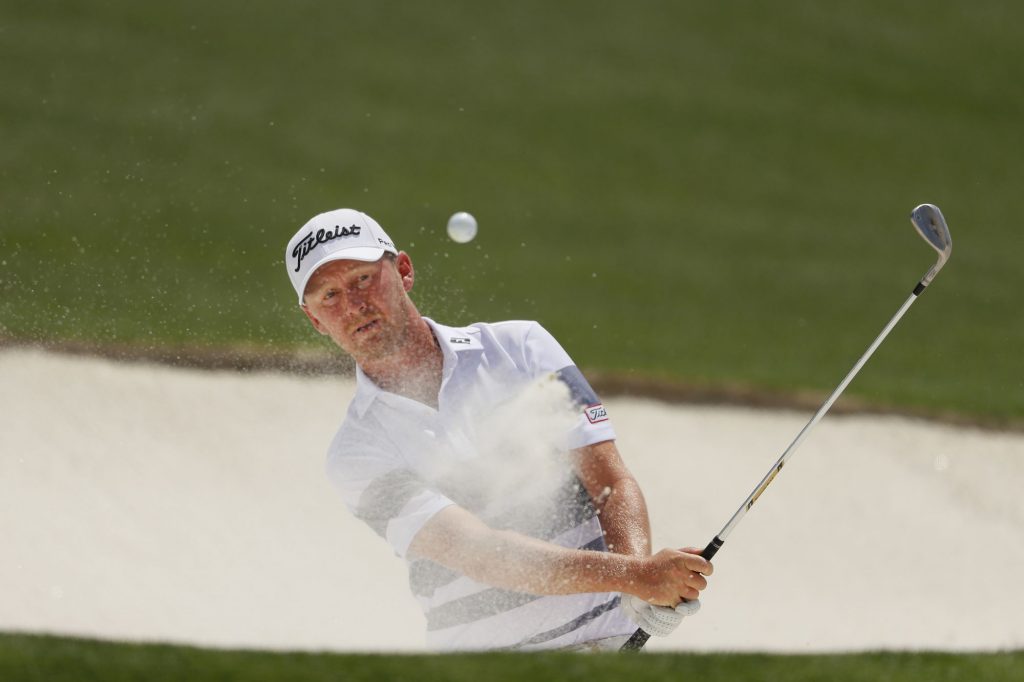
Justin Harding of South Africa
For the players battling to secure tickets to the upcoming Majors, there was not as much movement in the rankings:
- Justin Harding (RSA)
Harding missed the cut at the RBC Heritage on the PGA TOUR and drops one spot to number 45, but still has an excellent chance to secure an exemption to the U.S. Open which will be played at the Pebble Beach Golf Links in California from June 13-16. He needs to remain inside the top 60 on the OWGR by either May 20 or June 10, which are the cut-off dates for the exemptions.
Harding will be playing in the Zurich Classic of New Orleans this week, partnering with fellow South African Branden Grace in the $7.3 million two-man team event.
- Jazz Janewattananond (THA)
Jazz narrowly missed the cut by one shot in the Token Homemate Cup on the Japan Golf Tour (JGTO) last week. He would slide down three spots in the rankings to 74. He looks to have secured a special invitation to the US PGA Championship at Bethpage Black in New York May 16-19 by being inside the top 100 on the OWGR till May 5.
The next important step on the OWGR for him will be breaking into the top 60 by either May 20 or June 10, for an exemption into the U.S. Open.
- Kurt Kitayama (USA)
Kitayama did not play last week and slips three places in the rankings to number 109. His immediate challenge is to break into the top 100 and get a chance for a start in the US PGA Championship.
He will be playing in the Tropee Hassan II this week in Morocco and Volvo China Open next week, and need to make up nine places between now and the cut-off date May 5.
*Trophy shot of Danthai: Photo credits to Japan Golf Tour

By V. Krishnaswamy
Swamy is one of India’s leading sports writers, who has covered over 20 Majors and 250 international golf tournaments.
Augusta, April 15: Justin Harding needed a birdie on the 18th like none before. This final birdie was to get a recall to the Masters 2020. Harding had bogeyed the 18th the first two days and was happy to have parred it on the third. But now on the final day, he needed something more from it. Faced with a 22-foot putt on the undulating final green, Harding, who putted like a dream all week did just that. He holed it for an even par 72 and his eight-under-par 280 comprising 69-69-70-72 placed him tied-12th and ensuring an early ticket to The Masters in 2020. The 72 also ensured that he was par or better all week.
It will also boost his chances for the Presidents Cup, where he is already seventh in the standings. The only player eligible for Presidents Cup’s International Team finishing ahead of him was Jason Day in tied-fifth.
While Harding was securing his return ticket to Augusta, Tiger Woods re-affirmed his status as one of the all-time greats with a comeback that would be talked about for generations.
Fourteen years after fourth Green Jacket, he added a fifth one, and 11 years after his 14th Major, he added a 15th. In both cases he came closer to Jack Nicklaus’ Everest-like records of six Green Jackets and 18 Majors. It was also his 81st PGA Tour win, which now leaves him just one behind Sam Snead’s mark of 82.
Coming back to Harding, he said, “It was a relief to finally get a birdie on 18th and it is nice to book a return to the Masters. I have learnt a lot, but on this course it is never easy.”
Harding was the best of the 17 debutants at this year’s edition and was also among the top putters in the event.
Harding birdied the first, but bogeyed the second and fourth. He birdied the sixth, only to bogey the seventh and turned in one-over. He bogeyed the tenth at which point a finish in Top-12 looked unlikely. But birdies 12th and 13th raised hopes only to see them fall with a bogey on 15th. A final birdie on the 18th saw him sneak into tied-12th alongside Bubba Watson, Justin Thomas, Matt Kuchar and Ian Poulter.
The whole of 2018 and thus far in 2019, Harding took an arduous route and made it to the Masters in the nick of time by making the World’s Top-50 with barely two weeks left. Regardless of where he is in rankings next year at this time, he will earn a recall to the Augusta National.
This year his Carol, mother, and Stafford, father, were both there as were some friends.
Coming in as an unknown player Harding held a lot of attention. He even held a share of the lead one time and he was tied-sixth at the end of the first and second day and then tied-seventh at the end of 54 holes. On the final day, he five birdies and five bogeys. One more shot better and he would have been inside Top-10 on his debut at the Masters.
Kiradech Aphinbarnrat, making his third trip to the Masters started the week with a superb 69, the same as Harding, but thereafter struggled at times with 72-75-73 on the next three days. On Sunday, starting from the back nine he was four-under with birdies on 14th, 15th, 16th and 18th, but on the second nine he bogeyed the third and had a nightmarish finish with bogey-double bogey-bogey stretch between sixth and eighth holes to end up with 73.
He finished at one-over-par 289 in tied-49th place and will need to stay in Top-50 of the world to get a start again next year.
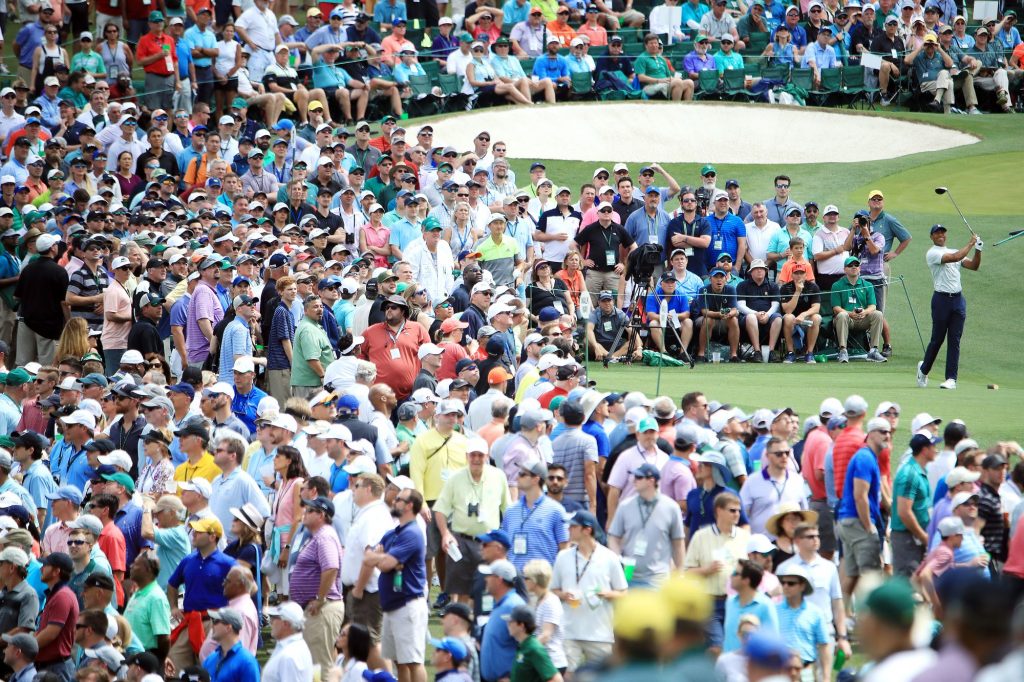
By. V. Krishnaswamy in Augusta National.
Swamy is one of India’s leading sports writers, who has covered over 20 Majors and 250 international golf tournaments.
Augusta, April 13: There may be no Indians in the field, but the winner of the Par-3 contest, Matt Wallace, and one of the six amateurs in the field, Devon Bling, have an Indian connection.
Masters debutant Matt Wallace of England, the winner of Par-3 contest, began his rise from a distant 151st on World Rankings to his current 36th with a win in the Hero Indian Open 13 months ago.
Wallace, who won India’s National Open went on to, made it to the Masters as he entered the Top-50 of the world comfortably.
His rise in rankings also meant he qualified for the World Golf Championships Matchplay and could not defend his title in India.
He did tweet a message wishing the tournament luck.
Wallace’s win at Par-3 came on the third play-off hole against 1988 Masters champion, Sandy Lyle, who also won the Par-3 in 1997 and 1998. Wallace’s effort included an ace which was the 100th in Par-3 contests since its inception in 1960.
It is said the winner of Par-3 is jinxed and no one has won Par-3 and the Green Jacket in the same year, though 11 players have won the two but in separate years.
Wallace with his girlfriend, Chelsea on the bag, totaled 23-under, as did Lyle, while three players carded 22-under each and one of them was Devon Bling.
Wallace did have a great start, shooting 75.
Amateur Devon, an Indian American, who holds big promise
Devon’s father Nick, an Indian by birth moved to the US in 1978 and met Sara Bling, a London-born physical therapist. Nick and Sara married in 1990.
Devon, 19, grew up in Ridgecrest, California and took to golf early. His love for the sport was nurtured by his mother, Sara, who took him around, while father travelled for his job.
Devon finished runner-up in US Amateurs in 2018 and earned an invite to the Masters, playing where was both his and his mother’s dream.
Devon’s mother Sara was instrumental in the development of his golf. But tragedy struck the family, when Sara died suddenly of a stroke in 2013. Devon has since played and dedicated his golf to his mother. Devon has taken on Sara’s second name.
Devon, who also had an ace on seventh holes, was Tied-third alongside two two-time Major winner, Bubba Watson and Martin Kaymer. Bubba won both his Majors at Augusta.
A delighted Devon said, “I wouldn’t have wanted it any other way. First Masters, first Par 3, hit a great shot, it went in, and, yeah, that’s the best thing that’s ever happened in the world.” Devon missed the last par putt to stay at 5-under and a share of the lead, and ended in a tie for third.
In the main event, Devon began with a 74.
Four of the seven Asians at Masters are Japanese
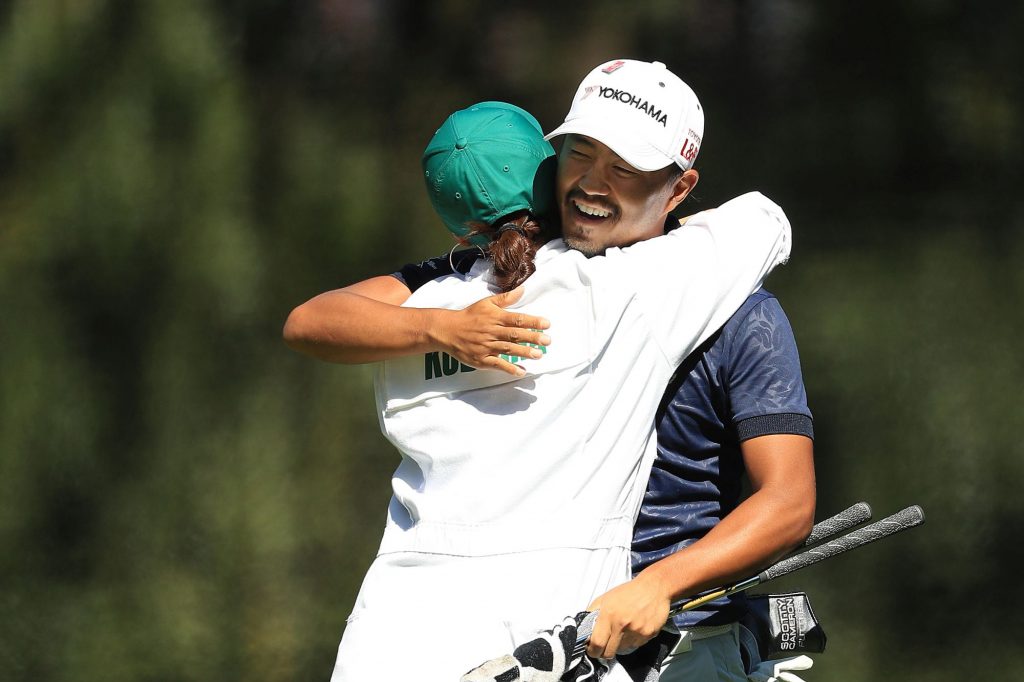
The field of 87 has six amateurs and 17 first-timers. It has seven Asians, of which four are Japanese including amateur Takumi Kanaya, who won the Asia-Pacific Amateurs last September to earn an invite to the Masters. The Japanese pros in the field are Hideki Matsuyama, Satoshi Kodaira and Shugo Imahira.
Other than the Americans, who make up for most of the field, there are nine Englishmen, six South Africans, four each from Spain, Japan and Australia. Argentina, Canada, Germany and Sweden have two each, while 11 other countries have one player each.
Golden Bear congratulates, wishes Conners on win and Masters
No one could have got a better man to wish him as he went for the tee off on Thursday. Corey Conners, who was the last man into the field by winning the Valera Texas Open, for which he Monday-qualified.
Corey was in the first group in the morning session on Thursday, who went off soon after the ceremonial tee-off by the legendary Jack Nicklaus and Gary Player. Corey got to meet Nicklaus.
Conners revealed, “He just congratulated me on the win, that felt pretty special. Never thought in a million years that Jack Nicklaus would know who I am and it just felt pretty cool. And I watched him and Mr. Player tee off, so it was pretty cool.”
Stenson back with his old caddie, but probably only for Masters
Henrik Stenson is back to his former caddie, fellow Swede, Fanny Sunesson, at least for this week. They were together at Arnold Palmer Invitational, too, though Stenson had another caddie for WGC-Matchplay.
Stenson split up with his former caddie Gareth Lord last November and Lord teamed with Justin Rose for a few events while his regular caddie Mark ‘Fooch’ Fulcher recovered from heart surgery.
Stenson and Fanny worked together from 2007 to 2011 before Sunesson retired. She had formerly caddied for Nick Faldo including during two of his three Masters titles.
Though Stenson does not seem to have any regular caddie right now, it is unlikely Sunesson will continue as she has retired from full time work.
Ernie’s nephew catches the eye
The six-strong contingent from South Africa has no less than Major winners – Louis Oosthuizen, Charl Schawartzel and Trevor Immelman, but of the other three, young Jovan Rebula, has been talked about a lot. Rebula is the nephew of four-time Major winner, Ernie Els, and won the 2018 British Amateur, which is how he made it to the Masters.
The other two South Africans are Branden Grace and Justin Harding.
Rebula shot 73 on the first day.
Fragile Jason Day hangs in
Jason Day reportedly injured his back while picking up his daughter before the first round. After an initial scare he managed to hang in and play. He shot 70, but needed on-course treatment and is continuing to play and moving up.
Ends.
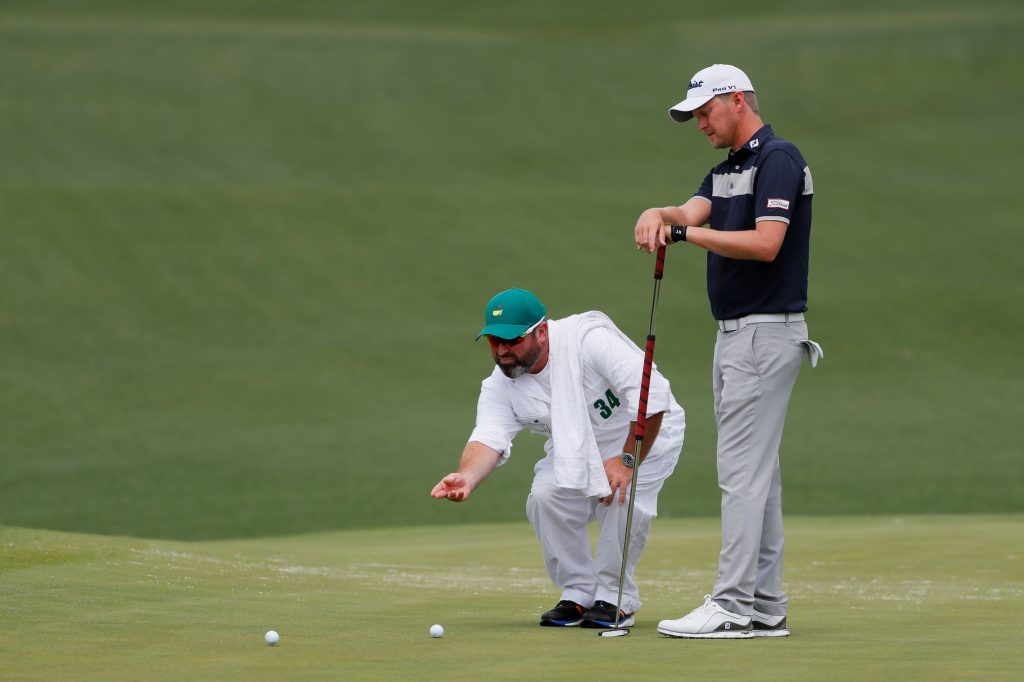
By. V. Krishnaswamy
Swamy is one of India’s leading sports writers, who has covered over 20 Majors and 250 international golf tournaments. And if he were to answer the divine call, he will be the first to jump on the plane to Augusta National, which is where he is this week.
Augusta, April 12: It has literally been a journey from Z (Zambia) to A (Augusta) for Justin Harding over the past year. This week last year, the 31-year-old Harding was at home and getting ready to play the Zanaco Masters, an event on the Sunshine Tour in Zambia. He missed the cut.
Twelve months and 52 weeks on, he is playing at Augusta National. He was the clubhouse leader when he finished his round, but was later overtaken by Brooks Koepka and Bryson DeChambeau, who each shot 66.
In the period since the start of 2018 he has played 38 tournaments spread over 22 countries and made his way through into World’s Top-50 with five wins, two on Sunshine Tour in South Africa, two on Asian Tour and one on European Tour besides a whole lot of other Top-10s. In the process he climbed more 650 places on World Rankings from 712 to his current 49th. “Most of the tournaments I have play on have been new to me,” said Harding.
For Harding oldest of the 17 debutants this year, playing the Masters was the furthest from his mind as he watched it on TV last year.
A win in Qatar Masters and a second place in Kenya Open, both on the European Tour, moved him inside Top-50 to 48th place just in time before the cut-off for Masters. He was in.
When asked what was the reason for his success over the last 15 months, Harding said, “Consistency. Becoming a little better mentally. No longer really going through the highs and lows and emotional roller coaster, so to speak. But that also comes in not really playing the aggressive mindset game that I was in the past. I’m hitting three‑woods off tees a little more often now, laying back on drivable par‑fours, just trying to get a little bit smarter on the golf course, making less mistakes and hoping a couple birdies come.”
About his practice here at Augusta, Harding said, “I did nine, nine and nine. We, I had a terrible front nine on Tuesday and I decided to try it again on Wednesday morning and it was a bit better and I actually negotiated it quite nicely this morning. But I didn’t really, I didn’t want to overdo it. Everyone sometimes kinds of comes to Augusta and tries to play as many rounds as they can. I kind of wanted to stick to the same sort of game plan and setup that I normally have every other week.
On his closing bogey, Harding admitted, “So I would love to have got into the clubhouse at four‑under par, but I was actually trying to give myself another birdie chance, sometimes it doesn’t quite happen. It’s all right. We got a lot of golf left to play, I’ll be all right.”
Asked if some of the South African stars of the past had given any advice, Harding said, “I haven’t spoken to Gary (Player) yet. I spoke to Ernie (Els) and chatted to him a little bit about the back nine when I played with him in San Antonio last week. And then obviously I had practice rounds with (Branden) Grace and (Charl) Schwartzel and (Louis) Oosthuizen and Jovan Rebula. Both him (Rebula) and I were just trying to pick each other, pick the big boys’ brains and it’s just helpful.
His mother, Carol and father, Stafford, are both here in Augusta. His father got his visa in the nick of time and was glad to be here to see Harding playing.
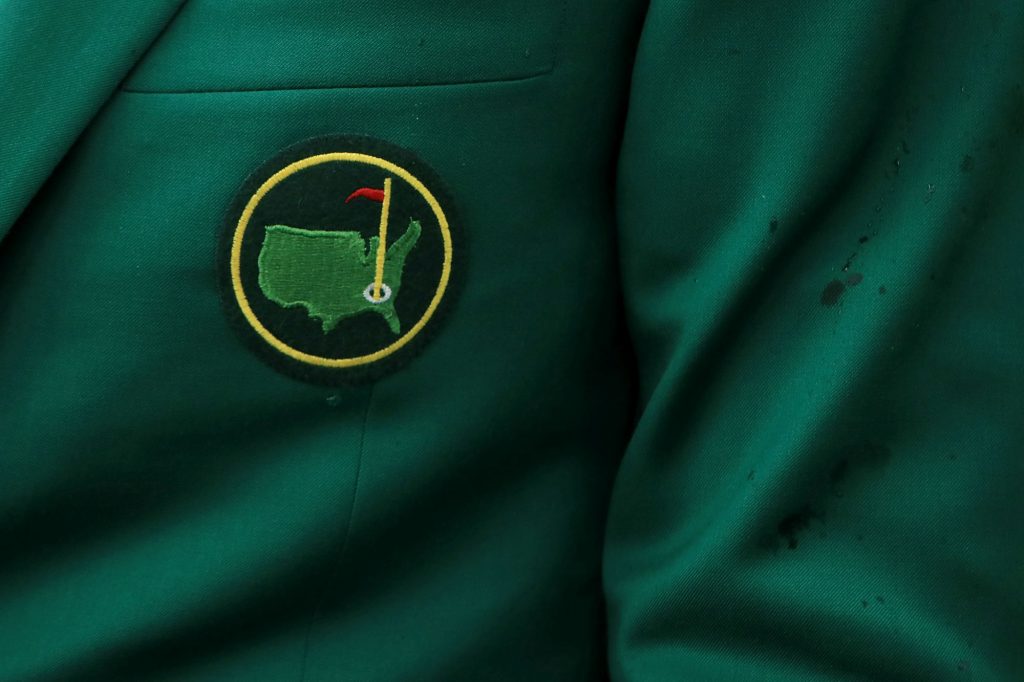
By. V. Krishnaswamy
Swamy is one of India’s leading sports writers, who has covered over 20 Majors and 250 international golf tournaments. And if he were to answer the divine call, he will be the first to jump on the plane to Augusta National, which is where he is this week.
“If God were now to decide that I could go to only one golf tournament a year – I would choose the Masters.”
Attending a Masters tournament was never really on my bucket list when I turned down a Management programme to become a sports journalist back in 1982.
Golf was a sport that hardly got a mention in Indian newspaper sports pages and it was only the final day report/ scores that made prominent headlines (meaning double columns or more) and that, too, only occasionally.
Golf names that evoked occasional conversations were still Jack Nicklaus, Arnold Palmer, Gary Player and Greg Norman.
The first time Masters really came into a conversation in a newsroom in my presence was in 1983 and that was my first full year as a sports journalist.
One of my senior colleagues in the Sports Department of the Times of India, while appreciating Seve Ballesteros’ 1983 win at Augusta, remarked, “He (Seve) started out as a caddie in golf and look where he is now.”
In India, pro golf was still a sport played predominantly by players with caddie backgrounds.
Those days, as now, cricket ruled India, but I was obsessed by athletics and passionate about chess – PT Usha was the emerging athletics star and the future World chess champion Vishy Anand was yet to turn up on the horizon.
Covering an Olympic Games and/ or World Chess Championship was my ultimate dream. I managed both.
Over the years, Usha became a friend and so did Anand and their success, which I covered many times in different parts of the world gave me great joy.
Golf didn’t become an all-consuming passion and a full-time profession till around the turn of the century when I quit my job as a Sports Editor at one of India’s leading dailies to ‘do my own thing’.
The Masters of 1983
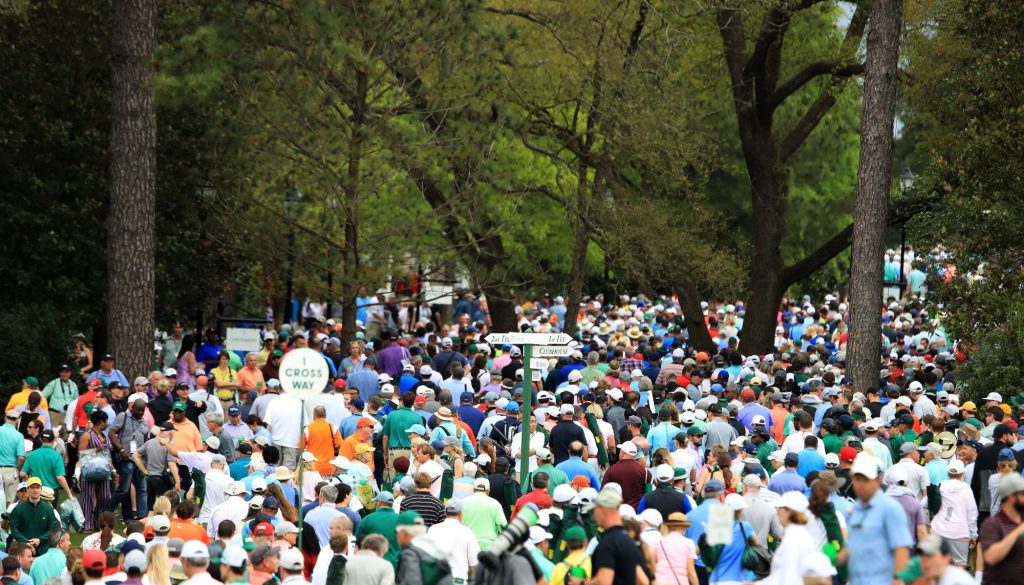
Coming back to the Masters of 1983, it wasn’t till recently, more specifically after the passing away of the legendary Dan Jenkins, that I learnt more about the 1983 Masters. I came across one of Jenkins’ fine pieces in the April 18, 1983 issue of the Sports Illustrated.
It was indeed a historic Masters – the 1983 Masters had its first Monday finish since 1973; it was the last time Arnold Palmer made the cut at the Masters; it was also the first Masters from which Jack Nicklaus pulled out after the first round (because of back spasms) and it was the last time Sam Snead played the Masters or for that matter any Major.
I discovered more: It was also the first time the Augusta National had allowed players the use of their own caddies and it was also the first time a female caddie was used by a player (the 1969 Masters champion George Archer) and he had his daughter, Elizabeth on the bag.
None of that was mentioned in the reports that I got to see back in 1983, but it was the year I first heard of the Masters as a 20-year-old rookie sports journalist. Yet, it did not become a part of my life till more than two decades later.
The first ‘sighting’ of Masters
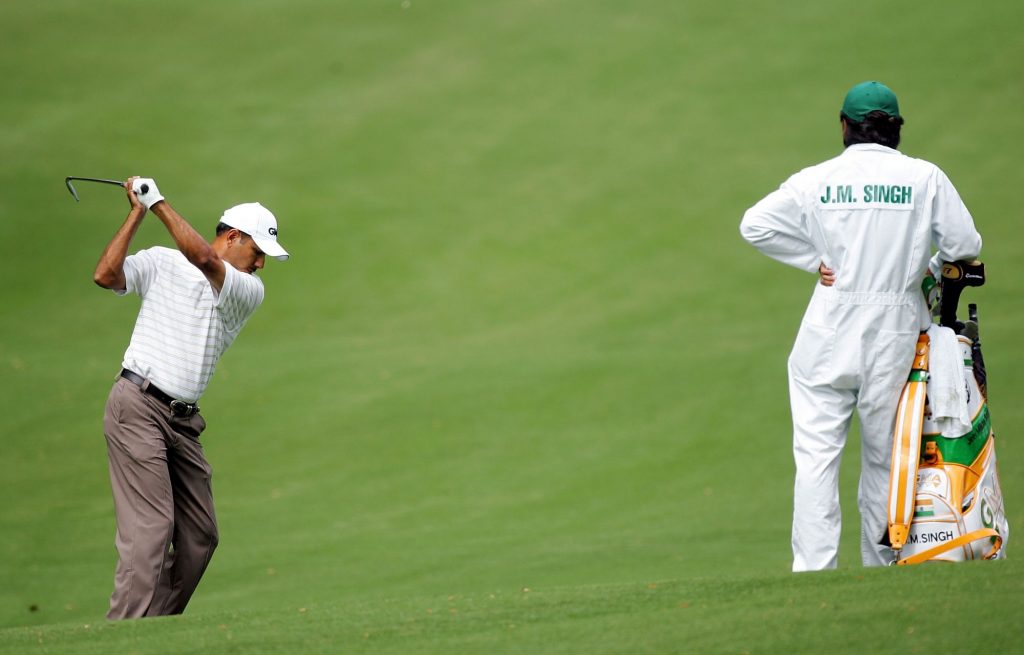
Life has come a long way since. If God were now to decide that I could go to only one golf tournament a year – I would choose the Masters.
I first set foot at the Augusta National in 2007. I was lucky to get credentials despite applying ‘after the closing’ date for applications. My appeal to the committee that I should be allowed because it was the first time an Indian would be teeing off at the Masters, found sympathetic ears.
Jeev Milkha Singh, who from being 377th in the world at the end of 2005 and winless since 1999, had a stellar 2006 winning three events and topping the Asian Tour Order of Merit and rising to 37th in the world to earn an invite to the Augusta National Golf Club for the 2007 Masters.
Jeev, gracious as ever, invited me for the tournament – he would put up me and two other Indian journalists up in a house, barely a stone’s throw from the Augusta National.
What a week it was! Every Indian in Augusta seemed to be on the course or over at the house. Jeev decided to shift to a hotel to stay focused. After the first three days of an exceptionally cold Masters week, Jeev with 72-75-76 was Tied-16th and in sight of a Top-15 finish which would earn a recall in 2008.
Then he made a quadruple bogey on the slick greens of the first hole on the final day and slid to T-37. Jeev did return in 2008 with a special invite and he finished T-25th, still the best by any Indian at the Masters.
Jeev played his third and last Masters in 2009. The only other Indians to have played the Masters have been Arjun Atwal (2011), Anirban Lahiri (2015 and 2016) and Shubhankar Sharma (2018).
Why is Masters so unique?
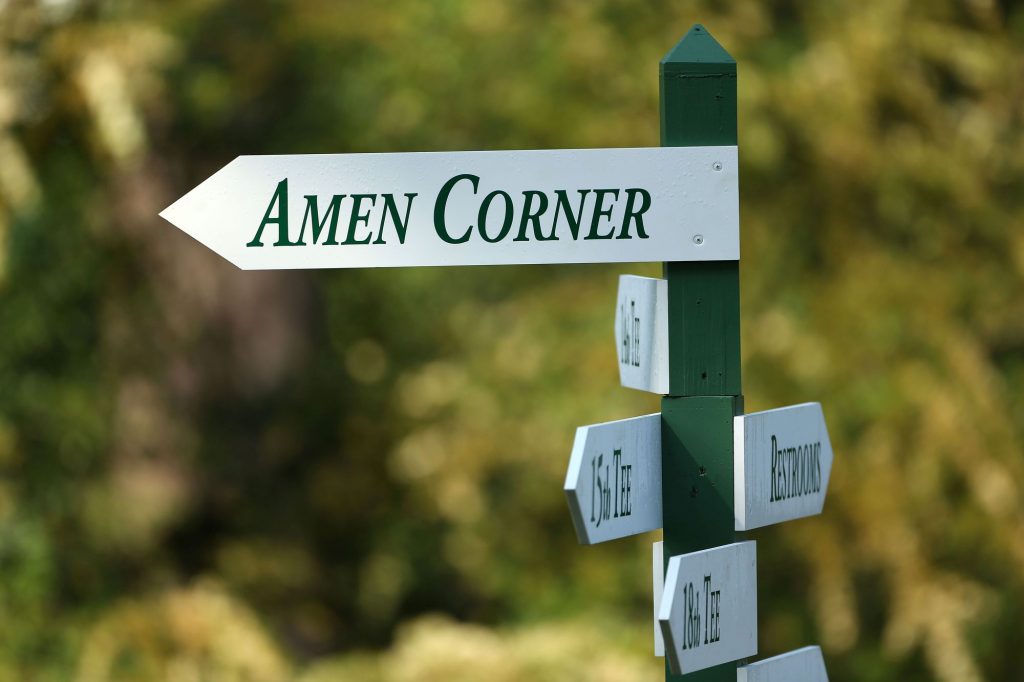
Much has been written about the history of the course and the tournament. It is easy to find it all over the internet and the countless books, that I have collected since getting ‘smitten’ by golf. But I learnt way more than that by “being at the Masters”.
It was not until I got to the Masters in 2007 that I realised a mobile phone had become an extension of my being. As part of the conditions that I had to agree to get accredited was that I was not allowed to carry the phone onto the ‘grounds’, as the course is called. It was torture for the first few hours and then I forgot about the phone for the rest of the week!
My vocabulary, too, changed. ‘Fans’ became ‘Patrons’; mobile phones were referred to as ‘illegal instruments’; ‘Pimento cheese sandwiches’ entered my list of much-loved food items and I drank beer without knowing the brand – all I knew was whether it ‘light’, ‘medium’ or ‘imported’ for there was no mention of the brands.
Stories of Amen Corner (11th, 12th and 13th) abounded and they were all fascinating; the tradition of ‘skipping’ the ball over the lake at the 16th on the practice days is something you start loving; the Par-3 contest on Wednesday is a tradition former champions and others love, but no Green jacket hopeful wants to win, because of a jinx that no one who wins the Par-3 contest has won the main event.
There is lots more like mobile phones are never allowed and a camera is allowed only from Monday to Wednesday.
The ‘must see’ landmarks include the most famous Magnolia Drive, essentially he driveway to the club, which was unpaved for the first 15 years from 1934 to 1947. It leads to The Founders Circle where countless patrons line up to get photographed by the official lensmen, who then give you a link from where you download your picture.
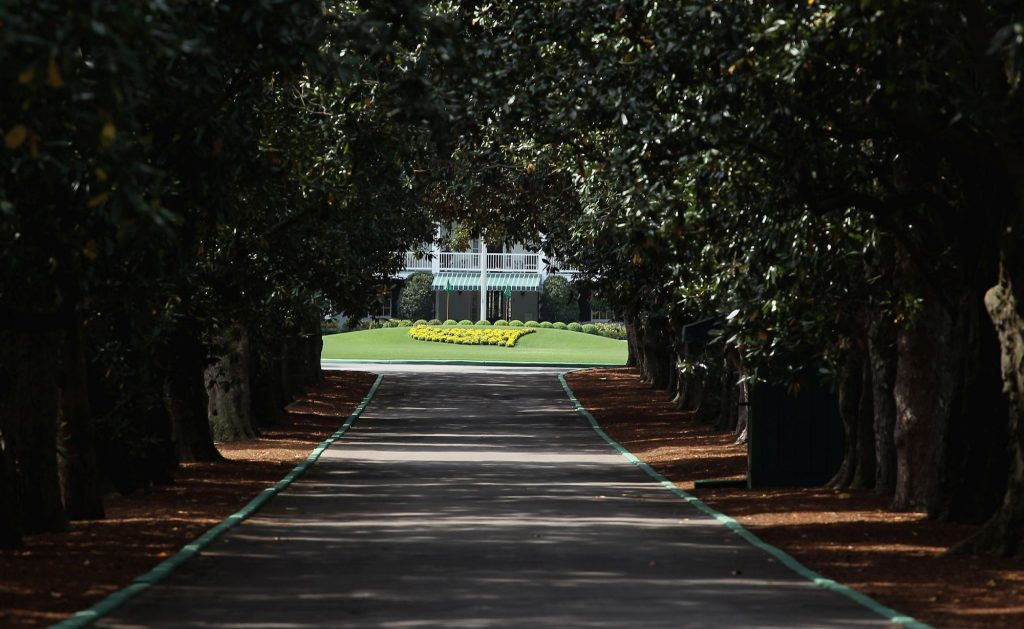
Other landmarks include the three bridges named after Sarazen, Hogan and Nelson; the two water fountains with plaques named after Palmer (behind the 16th) and the Nicklaus (between 16th and 17th). A third fountain called ‘Record Fountain’ is near the 17th.
The Rae’s Creek is the water body in front of the Par-3 12th green, while The ‘Crow’s Nest’ is the house for amateurs; the ‘Ike’s Pond’ touches the 8th and 9th of the par-3 contest in the Eastern part of Augusta; and the ‘Eisenhower Tree’ used to be to the left of the 17th fairway – the past tense being because an ice storm in 2014 caused so much damage to the tree that it had to be removed. So, memories are all we have now.
For me, the most fascinating landmark is the ‘Big Oak Tree’, the most famous meeting point at a venue, where no phones are allowed. So, a ‘meet-me-at-the-‘Big Oak’-at-6-pm’ means exactly that – meet at 6 pm for changes cannot be communicated till you actually meet.
The other amazing feature is the etiquette of ‘leaving your ‘golf chair’. Choose your point, place your chair and take a stroll. When you return, the chair is exactly where it was and no one is sitting on it. You can leave your wallet with credit cards and it would still be there hours later.
At Augusta, it is all about tradition and I learn a few more each time I go. I have already been there nine times!
I know what I will do each day; where I will watch the action from; from where I am going to get my beer and Pimento cheese or Egg Salad sandwich.
I also know that this week, like every one before this, I will unfailingly buy Pin Flags, hats, a T-shirt and a Masters jacket, and my wife will never raise an eyebrow or ask, “Not another one.”
Instead she asks, “Where’s mine?” Then I pull one out one for her. Tradition rules. Hopefully I will be here next year and every year after that. Amen. Well, make that ‘Amen Corner’.
Ends.
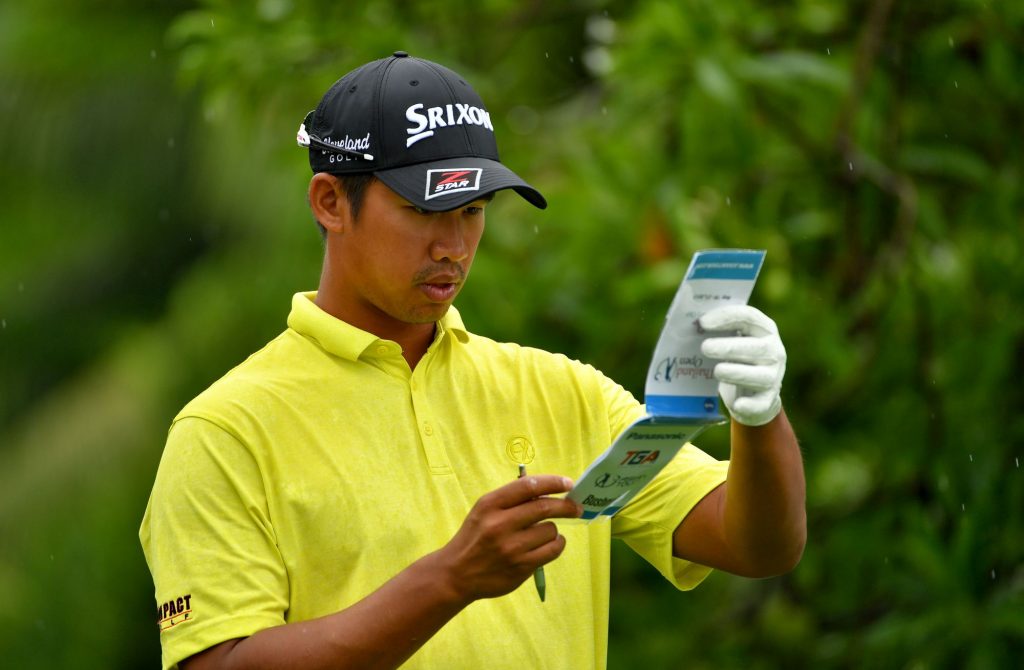

More News
Tour stars set to sparkle at the Asia-Pacific Diamond Cup
By - calvinkoh
[addtoany]

Chiba prefecture, Japan, May 4: The leading players from the Asian Tour are set to light up the Asia-Pacific Diamond Cup when they return to the Land of the Rising Sun next week.
Chiba prefecture, Japan, May 4: The leading players from the Asian Tour are set to light up the Asia-Pacific Diamond Cup when they return to the Land of the Rising Sun next week.
The Asia-Pacific Diamond Cup is the Tour’s first stop in Japan this season and promises to showcase the best talents from the region with the event being sanctioned by the Asian Tour and Japan Golf Tour Organisation (JGTO) again.
The Sobu Country Club, which is located in the Chiba prefecture on the outskirts of Tokyo, will welcome over 50 winners who have won on the Asian Tour.
Eight past champions including defending champion Yuta Ikeda of Japan, Chinese Taipei’s Chan Shih-chang and Thai veteran Prayad Marksaeng will also tee up at the ¥150,000,000 (Approx. US$1,338,067) event.
Chan is one of the contenders looking forward to another good showing at the Asian-Pacific Diamond Cup.
It was at the same event in 2016 where he won his second Asian Tour title to end the year in a career high of fourth position on the Order of Merit then.
“The Asia-Pacific Diamond Cup holds lots of fond memories for me. I won twice that year and that victory in Japan was special as I also became a multiple winner that year. I look forward to going back and let’s see if I can do it (win) again,” said Chan.
The Asia-Pacific Diamond Cup is supported by four key stakeholders. They are Mitsubishi Corporation, Kansai Television, Asia Pacific Golf Confederation and Japan Golf Association.
With the involvement of the Asia Pacific Golf Confederation, the tournament has welcomed a large number of amateurs over the years.
This year, 10 amateurs, including Singapore’s James Leow, India’s Anant Singh and China’s Lin Yuxin will be part of the field.
The Asian Tour was a co-sanctioning partner of the Asia-Pacific Panasonic Open from 2008 to 2013 before the event was renamed as the Asia-Pacific Diamond Cup in 2014.
Ends.

Swamy walks down memory lane and reminisces about Jeev’s win in 2006.
With the Volvo China Open making its return to the Asian Tour schedule again this week, Swamy goes on a nostalgic drive back to the past when India’s Jeev Milkha Singh won the event in 2006.
By V Krishnaswamy (@Swinging_Swamy)
Swamy is one of India’s leading sports writers, who has covered over 20 Majors and 250 international golf tournaments.
Following Jeev Milkha Singh’s fortunes at the 25th edition of the Volvo China Open’s brought back a flood of memories about this great champion.
It was the summer of 2006 when Jeev ended a seven-year drought by winning the then US$ 1.8 million Volvo China Open by a single stroke over Gonzalo Fernandez-Castano of Spain. I was the only Indian journalist at the event.
Jeev had been winless since the 1999 Lexus International on Asian Tour. The event then did not count towards the World Rankings.
Jeev had been second seven times since then and he also had 23 top-10s in the period. But a win kept eluding him.
Back home in India, a new crop of stars had emerged – Gaurav Ghei and Jyoti Randhawa among them; and Arjun Atwal had returned from the US and was regularly playing in Asia from the mid-1990s.
Only a couple of years earlier, Rahil Gangjee had won a title in his rookie year in 2004 and in 2005, Shiv Kapur made big waves with his triumph at the Asian Tour’s season-ending Volvo Masters of Asia in Thailand.
I had to fish out a report from my personal archives to recall what Jeev had told me after the win that week. He said, “I just can’t explain this feeling, it’s been a long seven years.”
He added: “I’ve let so many tournaments go in the last few years and went in to today with reverse psychology, thinking that if I didn’t win, it didn’t matter.”
Jeev started the final day one shot behind the leader, David Lynn. The Indian was tied for second with Prayad Marksaeng, while Fernandez-Castano and Paul Casey were tied fourth another shot behind.
Jeev started the final day with a bogey but got that shot back with a birdie soon after on the third hole.
He caught up with Lynn by the seventh hole and when the Englishman dropped a shot on nine, Jeev was the leader at the turn at 10-under. Lynn caught up again on 10, but his bogey on 13 was costly.
I still remember it was the birdie on the 14th at the Beijing Honghua International Golf Club that set Jeev on the road to victory. He was now two clear of the field and was consistent with pars over the next three holes. Meanwhile Lynn dropped shots on 13 and 15, but Fernandez-Castano came within a shot.
On the 18th the Spaniard needed a birdie to catch up with Jeev, who was behind him. His effort to get that extra birdie forced an errant drive off the 18th and ended with a bogey handing Jeev a two-shot cushion with one hole to play.
“When I saw him (Fernandez-Castano) bogey the 18th, I decided to play it safe and not even go for the flag,” said Jeev, who bogeyed the 18th and still won by one at 10-under 278. Fernandez-Castano was second, Lynn was third and Casey was Tied-fourth.
When he finally got time to reflect on the win after his duties with press Conference, TV interviews, photos with staff and sponsors, Jeev got emotional and looked totally drained.
Who were the other Indians that day? Amandeep Johl finished T20th, Harmeet Kahlon was T-54th and Rahil Gangjee was T-60, while Shiv Kapur and Gaurav Ghei had missed the cut. The next morning, all of us left for Shanghai for the next event, the Asian Open.
The ever-gracious Jeev got all the Indians together in Shanghai – and invited all the players and some local friends to dinner at an Indian restaurant and he made sure I was there.
At Shanghai, he gave another example of his sportsmanship, by calling a penalty on himself while taking a shot from a lake and finished tied-26th. But for that penalty, he may have been close to Top-10.
That Volvo China win also took him to the top of the Order of Merit, which he ended up winning. He had been 314th (thank you, www.owgr.com) the week before and he rose to 194th and kept climbing there on.
With the burden of winning now gone, Singh won three times more that year – the Volvo Masters of in Valderrama to complete a Volvo double and added two titles in successive weeks in Japan (Casio World Open and Golf Nippon JT Series).
Thee wins in a six-week stretch and one third (Hong Kong Open) and 17th at HSBC Champions saw Jeev rising to 39th in the world and just as Christmas came around, the postman delivered the Masters invite to his home in Chandigarh.
When the last event of the 2006 season came around in Thailand, I was in Doha for the Asian Games, where India’s budding amateur stars, Anirban Lahiri, Gaganjeet Bhullar, Chiragh Kumar and Joseph Chakola (who now manufactures golf apparel) were winning a team silver.
With his Order of Merit win assured, Jeev spoke to me to ask if I could come to Bangkok to celebrate the win. I missed the closing ceremony in Doha and landed in Bangkok on the third day of the event and had a great celebration over the weekend.
It does not stop there. When the Masters invite came in the mail, Jeev again called up to invite me (and another journalist friend, the Dubai-based Joy, who had also flown into Bangkok) to come to the Augusta National as it would be the first time an Indian would play at the Masters.
He ensured accommodation for us along with his family and it was the beginning of my love affair with the Masters, which I have not missed for a decade now.
Jeev has always been a great ambassador for Indian sport and golf. One would love to see him win yet again, and maybe in China this week, where at one stage he was three-under (actually the scoreboard showed four-under) but ended at one-under with a double on 18th at the Genzon Golf Club. There are three more days to go.
Come on, Jeev. Do it again.
*Singh opened his account at the 2019 Volvo China Open with a one-under-par 71 to trail the leaders by six shots in tied-69th place.

Olle Nordbeg provides an intimate guide to the fabled Namseoul Country Club, home of the storied GS Caltex Maekyung Open.
By Olle Nordberg, Former Asian Tour and European Tour professional
A classic course in Asian professional golf, perhaps as memorable as Delhi Golf Club and Hong Kong Golf Club, although not necessarily similar in any way. But still an old-school Asian Tour course in every sense of the word. A course that everyone that played it back in the old days still talk about.
A beautifully landscaped course in the hills on the outskirts of Seoul, and on a nice clear spring-day you will have a great view of the surrounding suburbs from the hills above.
My first time playing the Maekyung at Namseoul was in 1995 on the old APGC Asian Circuit, and as was the case with Delhi Golf Club, my first visit there was also the scene of my best result in the tournament unfortunately. If my memory serves me correctly, I finished in a respectable 14th position that year.
Obviously, I was not a very good student of the game, or at least at adapting to different playing conditions, but don’t be fooled.
Namseoul is not overly long by modern standards, but it is a very strategic course, although maybe more deceptively so than some other courses.
By deceptive I mean that at first glance it is not very narrow, and the rough is not that thick (at least when you play it early in the spring when the Maekyung is always played), so you might feel like you can be a bit casual off the tee. That you can afford to be a bit imprecise with your drives or whatever you tee off with, and not focus properly on the shot at hand.
This would be a big mistake, and not because of what lies you might face in the rough, bunkers or trees awaiting a miscue with the tee-shot, the real problem will lie with your approach to the green from a less than ideal position.

The greens at Namseoul slope almost exclusively back-to-front, and some of them quite severely so. And they can be fast. Or very fast if you take the slope into consideration, coming from the wrong side of the hole.
Depending on how dry the weather is or has been, they can also be firm which is not an easy combination.
Control of approach shots is key, both when it comes to distance and direction. You will need very precise iron-shots into the greens in order to shoot good scores here. It is imperative that you place the ball within, say a 90-degree angle (or pie-shape) short of or below the hole, if you are going to be able to consistently have good opportunities to make putts.
Putts from above the hole or even some sidehill putts, will inevitably result in come-back attempts you wish you didn’t have. Even from normally makeable distances.
The advice here has always been, that it is often better to miss a green short than having a putt from the back of the green or wrong side of the hole. A chip or pitch uphill from short of the green is usually a much easier proposition for an up-and-down on these raised-up greens.
Elevation will also be a factor some holes, as the course is perhaps the hilliest on the Asian Tour schedule. On a few of the holes with very elevated greens like number 13, it can be difficult to keep the ball short of the hole even though most players will have no more than a wedge left for the second shot. The ball will be coming in on a flatter trajectory than usual because of the elevation, which will make it more difficult to stop it quickly.
The final hole is also playing quite severely uphill on the second shot, but the difficulty of the hole does not end there. The two-tiered green can be absolutely diabolical depending on where the pin is placed.
As with the rest of the greens it slopes acutely back to front, and with the added steep tier in the middle, it makes it much more difficult when pins are on the back portion as they usually are on the weekend.
Coming up a bit short and leaving the ball on the lower tier with your approach, you are facing a putt with the possibility of the ball coming back to your feet if you do not give it enough pace. Hit it too firmly and you could find yourself with a six-footer coming back down the hill, which if you miss the hole with in the come-back attempt, you could end up back down on the lower tier where you started. This has all been done in the past.
Miss the 18th green long with the approach, and you will need deft touch in order to keep your chip on the top plateau. Otherwise it will run all the way down to the front of the green, where you will be facing the scenario in the paragraph above.
All this makes for a potentially dramatic finishing hole, a two-shot swing on 18 is a very real possibility as we saw last year, and not only if one player makes a birdie.
The spectators will be out in full force on the weekend, and there could be thousands of people around the 18th green watching what I think is one of the most interesting finishing holes on the Asian Tour.

South African Justin Harding is in the running to qualify for the International Team at the President’s Cup in Melbourne this December.
This article was first published on PresidentsCup.com.
When an unfamiliar name popped up on the Masters Tournament leaderboard recently, almost everyone gasped with the same question – “Who is Justin Harding?”
For golf’s fervent followers in South Africa and Asia, Harding is already a familiar name thanks to a combined nine victories on the Sunshine and Asian Tours. Last month, he took another big leap forward in his career by securing his biggest win yet at the Qatar Masters on the European Tour.
The rewards for an amazing five wins over a span of 10 months have included appearances in the WGC-Dell Technologies Match Play, the Masters and other PGA TOUR starts, including the Zurich Classic of New Orleans this week.
Ranked 712th in the world at the end of 2017, he now sits in 45th place and finds himself mixing it up with the big boys and hanging out with potential teammates for the Presidents Cup.

Justin Harding of South Africa
As a child, Harding grew up in Somerset West, South Africa and played junior golf alongside the likes of Branden Grace, a three-time Presidents Cup International Team member. Surfing was his first sporting love but once his father, a businessman, introduced him to golf, Harding was hooked and later developed into a good amateur golfer.
Strangely though, he had earned the nickname “Hack” as a junior player due to his wayward driving and a taboo that observes is to avoid playing with No. 3 golf balls.“I’ve used them a few times and wasn’t successful .… I’ve banned it,” he laughs.
This is Harding’s fifth consecutive week playing on U.S. soil but it isn’t something new as he played college golf at Lamar University in Texas where he majored in business studies. After graduating in 2010, he turned professional and returned home to cut his professional teeth where he would later win the first of his seven titles later that year.
At the Masters, the unassuming South African didn’t hack it around as he produced a measured performance to finish a commendable T12 which guaranteed a return trip in 2020. It also made the golfing world sit up and take notice of his talent.

Justin Harding of South Africa
Grace, who is teaming up with Harding in the Zurich Classic, isn’t surprised to see Harding showing up on golf’s biggest stage. “He’s very sneaky and streaky,” said Grace.
“He’s always been like that. That’s why he’s got the nickname ‘Hack’. He’s not always as straight off the tee but he gets it going. He’s really good with wedges and a putter in his hand, he’s really deadly and that’s what you need out here. He’s a hell of a grinder.
“I’ve known Justin for like forever. Obviously when you turn pro and you go your separate ways … but it’s nice to be able to get together now and play on the big scene together. He’s a great golfer and obviously we all know the last two years that he’s had, and it’s great to have him out here playing.”
Harding’s recent success has made him a genuine contender to qualify for the International Team for the Presidents Cup against the United States at Royal Melbourne Golf Club, Australia from December 9-15. With countryman and idol, Ernie Els captaining of the squad, Harding hopes to book his seat on the plane to Australia.
As a 17-year-old, he was amongst the throngs of fans gathered at Fancourt when South Africa hosted the Presidents Cup in 2003. There, he witnessed the historic showdown up close where Els and Tiger Woods battled it out like gladiators in sudden-death which ended in a stalemate following three extra holes played in near darkness.
“I went up to it and watched it first-hand. Watching Tiger and Ernie going against each other in the dark was pretty special,” said Harding.
“It’s an opportunity of a life time and I like to not let it slip. There are so many really good players and the team will be strong regardless.”

Ernie Els of South Africa
Els likes what he has seen from Harding after playing several rounds together during the past year. “Incredible story,” said the South African legend. “In less than 18 months, he’s come from absolutely not having a card on the Asian Tour, to winning on the Asian Tour, winning in Europe and finishing 12th at the Masters. And he’s got a great game obviously. He can win worldwide and he’s a great wind player. He could be a great asset to our team.”
Trevor Immelman, who is one of the captain’s assistants, has followed Harding’s career closely as they hail from the same hometown. “It’s a huge thrill for me to see him really starting to break through,” said Immelman, who is a Masters champion.
“In South Africa we’ve known about him for a few years now. Guys that know him have been waiting for him to kind of find his voice, so to speak, in the international game. It’s great to see him starting to compete so well in Europe and win in Qatar and transition that game straight here to the States. I mean, his first Masters, the guy finishes tied for 12th.
“He really doesn’t have too many weaknesses, and mentally what’s exciting is he’s really tough. He wants to play well and won’t be intimidated by anybody. I think it’ll be awesome if he manages to make this team.”
Harding reveals golf drives him to excel as success or failure in the game is totally dependent on his own attitude and effort. “I was pretty sporty but I like the individual aspect of golf, figuring out the puzzle and not relying on team members. If you get further, you get more rewards for an individual,” he said.
Except for this week which is a two-man team competition, Harding is prepared to grind it out on his own over the next four months before qualifying ends in August for the eight automatic slots for the International Team.
“It’s been a good 12 months, I’ve put up some good results and my golf is on an upward curve,” he said.
“It’s awesome I’ve made it out here on the PGA TOUR but by no means I’ve arrived. I’ve got a lot of work to do before I can put on a jersey (for the Presidents Cup).”
Ends.

Olle Nordberg revisits the OWGR and sees what lies ahead after a weekend which saw four of our members winning on different Tours.
With lucrative events such as WGCs and Majors looming, the Official World Golf Rankings becomes all important. Here we follow the Asian Tour players that are making a charge up the rankings and their quest to play their way into these events via the OWGR.
Thailand’s Kiradech Aphibarnrat, currently ranked number 42 on the OWGR, is already eligible for all the above events.
By Olle Nordberg, Former Asian Tour and European Tour professional
While there was no Asian Tour event last week, four of our members recorded wins on other Tours and picked up valuable points and improving their OWGR rankings: Chikkarangappa S. on the Professional Golf Tour of India (PGTI) improving his ranking to 274 from 312, Danthai Boonma on the Japan Challenge Tour moving to number 281 from 358, Maverick Antcliff on the China Tour going to 354 from 487, and Richard T. Lee on the Korean PGA rising to 499 from 1014.

Justin Harding of South Africa
For the players battling to secure tickets to the upcoming Majors, there was not as much movement in the rankings:
- Justin Harding (RSA)
Harding missed the cut at the RBC Heritage on the PGA TOUR and drops one spot to number 45, but still has an excellent chance to secure an exemption to the U.S. Open which will be played at the Pebble Beach Golf Links in California from June 13-16. He needs to remain inside the top 60 on the OWGR by either May 20 or June 10, which are the cut-off dates for the exemptions.
Harding will be playing in the Zurich Classic of New Orleans this week, partnering with fellow South African Branden Grace in the $7.3 million two-man team event.
- Jazz Janewattananond (THA)
Jazz narrowly missed the cut by one shot in the Token Homemate Cup on the Japan Golf Tour (JGTO) last week. He would slide down three spots in the rankings to 74. He looks to have secured a special invitation to the US PGA Championship at Bethpage Black in New York May 16-19 by being inside the top 100 on the OWGR till May 5.
The next important step on the OWGR for him will be breaking into the top 60 by either May 20 or June 10, for an exemption into the U.S. Open.
- Kurt Kitayama (USA)
Kitayama did not play last week and slips three places in the rankings to number 109. His immediate challenge is to break into the top 100 and get a chance for a start in the US PGA Championship.
He will be playing in the Tropee Hassan II this week in Morocco and Volvo China Open next week, and need to make up nine places between now and the cut-off date May 5.
*Trophy shot of Danthai: Photo credits to Japan Golf Tour

Justin Harding needed a birdie on the 18th like none before. This final birdie was to get a recall to the Masters 2020
By V. Krishnaswamy
Swamy is one of India’s leading sports writers, who has covered over 20 Majors and 250 international golf tournaments.
Augusta, April 15: Justin Harding needed a birdie on the 18th like none before. This final birdie was to get a recall to the Masters 2020. Harding had bogeyed the 18th the first two days and was happy to have parred it on the third. But now on the final day, he needed something more from it. Faced with a 22-foot putt on the undulating final green, Harding, who putted like a dream all week did just that. He holed it for an even par 72 and his eight-under-par 280 comprising 69-69-70-72 placed him tied-12th and ensuring an early ticket to The Masters in 2020. The 72 also ensured that he was par or better all week.
It will also boost his chances for the Presidents Cup, where he is already seventh in the standings. The only player eligible for Presidents Cup’s International Team finishing ahead of him was Jason Day in tied-fifth.
While Harding was securing his return ticket to Augusta, Tiger Woods re-affirmed his status as one of the all-time greats with a comeback that would be talked about for generations.
Fourteen years after fourth Green Jacket, he added a fifth one, and 11 years after his 14th Major, he added a 15th. In both cases he came closer to Jack Nicklaus’ Everest-like records of six Green Jackets and 18 Majors. It was also his 81st PGA Tour win, which now leaves him just one behind Sam Snead’s mark of 82.
Coming back to Harding, he said, “It was a relief to finally get a birdie on 18th and it is nice to book a return to the Masters. I have learnt a lot, but on this course it is never easy.”
Harding was the best of the 17 debutants at this year’s edition and was also among the top putters in the event.
Harding birdied the first, but bogeyed the second and fourth. He birdied the sixth, only to bogey the seventh and turned in one-over. He bogeyed the tenth at which point a finish in Top-12 looked unlikely. But birdies 12th and 13th raised hopes only to see them fall with a bogey on 15th. A final birdie on the 18th saw him sneak into tied-12th alongside Bubba Watson, Justin Thomas, Matt Kuchar and Ian Poulter.
The whole of 2018 and thus far in 2019, Harding took an arduous route and made it to the Masters in the nick of time by making the World’s Top-50 with barely two weeks left. Regardless of where he is in rankings next year at this time, he will earn a recall to the Augusta National.
This year his Carol, mother, and Stafford, father, were both there as were some friends.
Coming in as an unknown player Harding held a lot of attention. He even held a share of the lead one time and he was tied-sixth at the end of the first and second day and then tied-seventh at the end of 54 holes. On the final day, he five birdies and five bogeys. One more shot better and he would have been inside Top-10 on his debut at the Masters.
Kiradech Aphinbarnrat, making his third trip to the Masters started the week with a superb 69, the same as Harding, but thereafter struggled at times with 72-75-73 on the next three days. On Sunday, starting from the back nine he was four-under with birdies on 14th, 15th, 16th and 18th, but on the second nine he bogeyed the third and had a nightmarish finish with bogey-double bogey-bogey stretch between sixth and eighth holes to end up with 73.
He finished at one-over-par 289 in tied-49th place and will need to stay in Top-50 of the world to get a start again next year.

Swamy is covering his ninth Masters Tournament this week and shares his insight into what makes this Major so special for him.
By. V. Krishnaswamy in Augusta National.
Swamy is one of India’s leading sports writers, who has covered over 20 Majors and 250 international golf tournaments.
Augusta, April 13: There may be no Indians in the field, but the winner of the Par-3 contest, Matt Wallace, and one of the six amateurs in the field, Devon Bling, have an Indian connection.
Masters debutant Matt Wallace of England, the winner of Par-3 contest, began his rise from a distant 151st on World Rankings to his current 36th with a win in the Hero Indian Open 13 months ago.
Wallace, who won India’s National Open went on to, made it to the Masters as he entered the Top-50 of the world comfortably.
His rise in rankings also meant he qualified for the World Golf Championships Matchplay and could not defend his title in India.
He did tweet a message wishing the tournament luck.
Wallace’s win at Par-3 came on the third play-off hole against 1988 Masters champion, Sandy Lyle, who also won the Par-3 in 1997 and 1998. Wallace’s effort included an ace which was the 100th in Par-3 contests since its inception in 1960.
It is said the winner of Par-3 is jinxed and no one has won Par-3 and the Green Jacket in the same year, though 11 players have won the two but in separate years.
Wallace with his girlfriend, Chelsea on the bag, totaled 23-under, as did Lyle, while three players carded 22-under each and one of them was Devon Bling.
Wallace did have a great start, shooting 75.
Amateur Devon, an Indian American, who holds big promise
Devon’s father Nick, an Indian by birth moved to the US in 1978 and met Sara Bling, a London-born physical therapist. Nick and Sara married in 1990.
Devon, 19, grew up in Ridgecrest, California and took to golf early. His love for the sport was nurtured by his mother, Sara, who took him around, while father travelled for his job.
Devon finished runner-up in US Amateurs in 2018 and earned an invite to the Masters, playing where was both his and his mother’s dream.
Devon’s mother Sara was instrumental in the development of his golf. But tragedy struck the family, when Sara died suddenly of a stroke in 2013. Devon has since played and dedicated his golf to his mother. Devon has taken on Sara’s second name.
Devon, who also had an ace on seventh holes, was Tied-third alongside two two-time Major winner, Bubba Watson and Martin Kaymer. Bubba won both his Majors at Augusta.
A delighted Devon said, “I wouldn’t have wanted it any other way. First Masters, first Par 3, hit a great shot, it went in, and, yeah, that’s the best thing that’s ever happened in the world.” Devon missed the last par putt to stay at 5-under and a share of the lead, and ended in a tie for third.
In the main event, Devon began with a 74.
Four of the seven Asians at Masters are Japanese

The field of 87 has six amateurs and 17 first-timers. It has seven Asians, of which four are Japanese including amateur Takumi Kanaya, who won the Asia-Pacific Amateurs last September to earn an invite to the Masters. The Japanese pros in the field are Hideki Matsuyama, Satoshi Kodaira and Shugo Imahira.
Other than the Americans, who make up for most of the field, there are nine Englishmen, six South Africans, four each from Spain, Japan and Australia. Argentina, Canada, Germany and Sweden have two each, while 11 other countries have one player each.
Golden Bear congratulates, wishes Conners on win and Masters
No one could have got a better man to wish him as he went for the tee off on Thursday. Corey Conners, who was the last man into the field by winning the Valera Texas Open, for which he Monday-qualified.
Corey was in the first group in the morning session on Thursday, who went off soon after the ceremonial tee-off by the legendary Jack Nicklaus and Gary Player. Corey got to meet Nicklaus.
Conners revealed, “He just congratulated me on the win, that felt pretty special. Never thought in a million years that Jack Nicklaus would know who I am and it just felt pretty cool. And I watched him and Mr. Player tee off, so it was pretty cool.”
Stenson back with his old caddie, but probably only for Masters
Henrik Stenson is back to his former caddie, fellow Swede, Fanny Sunesson, at least for this week. They were together at Arnold Palmer Invitational, too, though Stenson had another caddie for WGC-Matchplay.
Stenson split up with his former caddie Gareth Lord last November and Lord teamed with Justin Rose for a few events while his regular caddie Mark ‘Fooch’ Fulcher recovered from heart surgery.
Stenson and Fanny worked together from 2007 to 2011 before Sunesson retired. She had formerly caddied for Nick Faldo including during two of his three Masters titles.
Though Stenson does not seem to have any regular caddie right now, it is unlikely Sunesson will continue as she has retired from full time work.
Ernie’s nephew catches the eye
The six-strong contingent from South Africa has no less than Major winners – Louis Oosthuizen, Charl Schawartzel and Trevor Immelman, but of the other three, young Jovan Rebula, has been talked about a lot. Rebula is the nephew of four-time Major winner, Ernie Els, and won the 2018 British Amateur, which is how he made it to the Masters.
The other two South Africans are Branden Grace and Justin Harding.
Rebula shot 73 on the first day.
Fragile Jason Day hangs in
Jason Day reportedly injured his back while picking up his daughter before the first round. After an initial scare he managed to hang in and play. He shot 70, but needed on-course treatment and is continuing to play and moving up.
Ends.

It has literally been a journey from Z (Zambia) to A (Augusta) for Justin Harding over the past year.
By. V. Krishnaswamy
Swamy is one of India’s leading sports writers, who has covered over 20 Majors and 250 international golf tournaments. And if he were to answer the divine call, he will be the first to jump on the plane to Augusta National, which is where he is this week.
Augusta, April 12: It has literally been a journey from Z (Zambia) to A (Augusta) for Justin Harding over the past year. This week last year, the 31-year-old Harding was at home and getting ready to play the Zanaco Masters, an event on the Sunshine Tour in Zambia. He missed the cut.
Twelve months and 52 weeks on, he is playing at Augusta National. He was the clubhouse leader when he finished his round, but was later overtaken by Brooks Koepka and Bryson DeChambeau, who each shot 66.
In the period since the start of 2018 he has played 38 tournaments spread over 22 countries and made his way through into World’s Top-50 with five wins, two on Sunshine Tour in South Africa, two on Asian Tour and one on European Tour besides a whole lot of other Top-10s. In the process he climbed more 650 places on World Rankings from 712 to his current 49th. “Most of the tournaments I have play on have been new to me,” said Harding.
For Harding oldest of the 17 debutants this year, playing the Masters was the furthest from his mind as he watched it on TV last year.
A win in Qatar Masters and a second place in Kenya Open, both on the European Tour, moved him inside Top-50 to 48th place just in time before the cut-off for Masters. He was in.
When asked what was the reason for his success over the last 15 months, Harding said, “Consistency. Becoming a little better mentally. No longer really going through the highs and lows and emotional roller coaster, so to speak. But that also comes in not really playing the aggressive mindset game that I was in the past. I’m hitting three‑woods off tees a little more often now, laying back on drivable par‑fours, just trying to get a little bit smarter on the golf course, making less mistakes and hoping a couple birdies come.”
About his practice here at Augusta, Harding said, “I did nine, nine and nine. We, I had a terrible front nine on Tuesday and I decided to try it again on Wednesday morning and it was a bit better and I actually negotiated it quite nicely this morning. But I didn’t really, I didn’t want to overdo it. Everyone sometimes kinds of comes to Augusta and tries to play as many rounds as they can. I kind of wanted to stick to the same sort of game plan and setup that I normally have every other week.
On his closing bogey, Harding admitted, “So I would love to have got into the clubhouse at four‑under par, but I was actually trying to give myself another birdie chance, sometimes it doesn’t quite happen. It’s all right. We got a lot of golf left to play, I’ll be all right.”
Asked if some of the South African stars of the past had given any advice, Harding said, “I haven’t spoken to Gary (Player) yet. I spoke to Ernie (Els) and chatted to him a little bit about the back nine when I played with him in San Antonio last week. And then obviously I had practice rounds with (Branden) Grace and (Charl) Schwartzel and (Louis) Oosthuizen and Jovan Rebula. Both him (Rebula) and I were just trying to pick each other, pick the big boys’ brains and it’s just helpful.
His mother, Carol and father, Stafford, are both here in Augusta. His father got his visa in the nick of time and was glad to be here to see Harding playing.

If Swamy were to answer the divine call, he will be the first to jump on the plane to Augusta National, which is where he is this week.
By. V. Krishnaswamy
Swamy is one of India’s leading sports writers, who has covered over 20 Majors and 250 international golf tournaments. And if he were to answer the divine call, he will be the first to jump on the plane to Augusta National, which is where he is this week.
“If God were now to decide that I could go to only one golf tournament a year – I would choose the Masters.”
Attending a Masters tournament was never really on my bucket list when I turned down a Management programme to become a sports journalist back in 1982.
Golf was a sport that hardly got a mention in Indian newspaper sports pages and it was only the final day report/ scores that made prominent headlines (meaning double columns or more) and that, too, only occasionally.
Golf names that evoked occasional conversations were still Jack Nicklaus, Arnold Palmer, Gary Player and Greg Norman.
The first time Masters really came into a conversation in a newsroom in my presence was in 1983 and that was my first full year as a sports journalist.
One of my senior colleagues in the Sports Department of the Times of India, while appreciating Seve Ballesteros’ 1983 win at Augusta, remarked, “He (Seve) started out as a caddie in golf and look where he is now.”
In India, pro golf was still a sport played predominantly by players with caddie backgrounds.
Those days, as now, cricket ruled India, but I was obsessed by athletics and passionate about chess – PT Usha was the emerging athletics star and the future World chess champion Vishy Anand was yet to turn up on the horizon.
Covering an Olympic Games and/ or World Chess Championship was my ultimate dream. I managed both.
Over the years, Usha became a friend and so did Anand and their success, which I covered many times in different parts of the world gave me great joy.
Golf didn’t become an all-consuming passion and a full-time profession till around the turn of the century when I quit my job as a Sports Editor at one of India’s leading dailies to ‘do my own thing’.
The Masters of 1983

Coming back to the Masters of 1983, it wasn’t till recently, more specifically after the passing away of the legendary Dan Jenkins, that I learnt more about the 1983 Masters. I came across one of Jenkins’ fine pieces in the April 18, 1983 issue of the Sports Illustrated.
It was indeed a historic Masters – the 1983 Masters had its first Monday finish since 1973; it was the last time Arnold Palmer made the cut at the Masters; it was also the first Masters from which Jack Nicklaus pulled out after the first round (because of back spasms) and it was the last time Sam Snead played the Masters or for that matter any Major.
I discovered more: It was also the first time the Augusta National had allowed players the use of their own caddies and it was also the first time a female caddie was used by a player (the 1969 Masters champion George Archer) and he had his daughter, Elizabeth on the bag.
None of that was mentioned in the reports that I got to see back in 1983, but it was the year I first heard of the Masters as a 20-year-old rookie sports journalist. Yet, it did not become a part of my life till more than two decades later.
The first ‘sighting’ of Masters

Life has come a long way since. If God were now to decide that I could go to only one golf tournament a year – I would choose the Masters.
I first set foot at the Augusta National in 2007. I was lucky to get credentials despite applying ‘after the closing’ date for applications. My appeal to the committee that I should be allowed because it was the first time an Indian would be teeing off at the Masters, found sympathetic ears.
Jeev Milkha Singh, who from being 377th in the world at the end of 2005 and winless since 1999, had a stellar 2006 winning three events and topping the Asian Tour Order of Merit and rising to 37th in the world to earn an invite to the Augusta National Golf Club for the 2007 Masters.
Jeev, gracious as ever, invited me for the tournament – he would put up me and two other Indian journalists up in a house, barely a stone’s throw from the Augusta National.
What a week it was! Every Indian in Augusta seemed to be on the course or over at the house. Jeev decided to shift to a hotel to stay focused. After the first three days of an exceptionally cold Masters week, Jeev with 72-75-76 was Tied-16th and in sight of a Top-15 finish which would earn a recall in 2008.
Then he made a quadruple bogey on the slick greens of the first hole on the final day and slid to T-37. Jeev did return in 2008 with a special invite and he finished T-25th, still the best by any Indian at the Masters.
Jeev played his third and last Masters in 2009. The only other Indians to have played the Masters have been Arjun Atwal (2011), Anirban Lahiri (2015 and 2016) and Shubhankar Sharma (2018).
Why is Masters so unique?

Much has been written about the history of the course and the tournament. It is easy to find it all over the internet and the countless books, that I have collected since getting ‘smitten’ by golf. But I learnt way more than that by “being at the Masters”.
It was not until I got to the Masters in 2007 that I realised a mobile phone had become an extension of my being. As part of the conditions that I had to agree to get accredited was that I was not allowed to carry the phone onto the ‘grounds’, as the course is called. It was torture for the first few hours and then I forgot about the phone for the rest of the week!
My vocabulary, too, changed. ‘Fans’ became ‘Patrons’; mobile phones were referred to as ‘illegal instruments’; ‘Pimento cheese sandwiches’ entered my list of much-loved food items and I drank beer without knowing the brand – all I knew was whether it ‘light’, ‘medium’ or ‘imported’ for there was no mention of the brands.
Stories of Amen Corner (11th, 12th and 13th) abounded and they were all fascinating; the tradition of ‘skipping’ the ball over the lake at the 16th on the practice days is something you start loving; the Par-3 contest on Wednesday is a tradition former champions and others love, but no Green jacket hopeful wants to win, because of a jinx that no one who wins the Par-3 contest has won the main event.
There is lots more like mobile phones are never allowed and a camera is allowed only from Monday to Wednesday.
The ‘must see’ landmarks include the most famous Magnolia Drive, essentially he driveway to the club, which was unpaved for the first 15 years from 1934 to 1947. It leads to The Founders Circle where countless patrons line up to get photographed by the official lensmen, who then give you a link from where you download your picture.

Other landmarks include the three bridges named after Sarazen, Hogan and Nelson; the two water fountains with plaques named after Palmer (behind the 16th) and the Nicklaus (between 16th and 17th). A third fountain called ‘Record Fountain’ is near the 17th.
The Rae’s Creek is the water body in front of the Par-3 12th green, while The ‘Crow’s Nest’ is the house for amateurs; the ‘Ike’s Pond’ touches the 8th and 9th of the par-3 contest in the Eastern part of Augusta; and the ‘Eisenhower Tree’ used to be to the left of the 17th fairway – the past tense being because an ice storm in 2014 caused so much damage to the tree that it had to be removed. So, memories are all we have now.
For me, the most fascinating landmark is the ‘Big Oak Tree’, the most famous meeting point at a venue, where no phones are allowed. So, a ‘meet-me-at-the-‘Big Oak’-at-6-pm’ means exactly that – meet at 6 pm for changes cannot be communicated till you actually meet.
The other amazing feature is the etiquette of ‘leaving your ‘golf chair’. Choose your point, place your chair and take a stroll. When you return, the chair is exactly where it was and no one is sitting on it. You can leave your wallet with credit cards and it would still be there hours later.
At Augusta, it is all about tradition and I learn a few more each time I go. I have already been there nine times!
I know what I will do each day; where I will watch the action from; from where I am going to get my beer and Pimento cheese or Egg Salad sandwich.
I also know that this week, like every one before this, I will unfailingly buy Pin Flags, hats, a T-shirt and a Masters jacket, and my wife will never raise an eyebrow or ask, “Not another one.”
Instead she asks, “Where’s mine?” Then I pull one out one for her. Tradition rules. Hopefully I will be here next year and every year after that. Amen. Well, make that ‘Amen Corner’.
Ends.

A special video tribute to honour the life of the late Arie Irawan, a consummate professional who touched the hearts and souls of the people around him.
Headlines at a glance
- June 2019
- May 2019
- April 2019
- March 2019
- February 2019
- January 2019
- December 2018
- November 2018
- October 2018
- September 2018
- August 2018
- July 2018
- June 2018
- May 2018
- April 2018
- March 2018
- February 2018
- January 2018
- December 2017
- November 2017
- October 2017
- September 2017
- May 2017
- March 2015
- April 2013
- March 2013
- February 2013
- January 2013
- January 2009
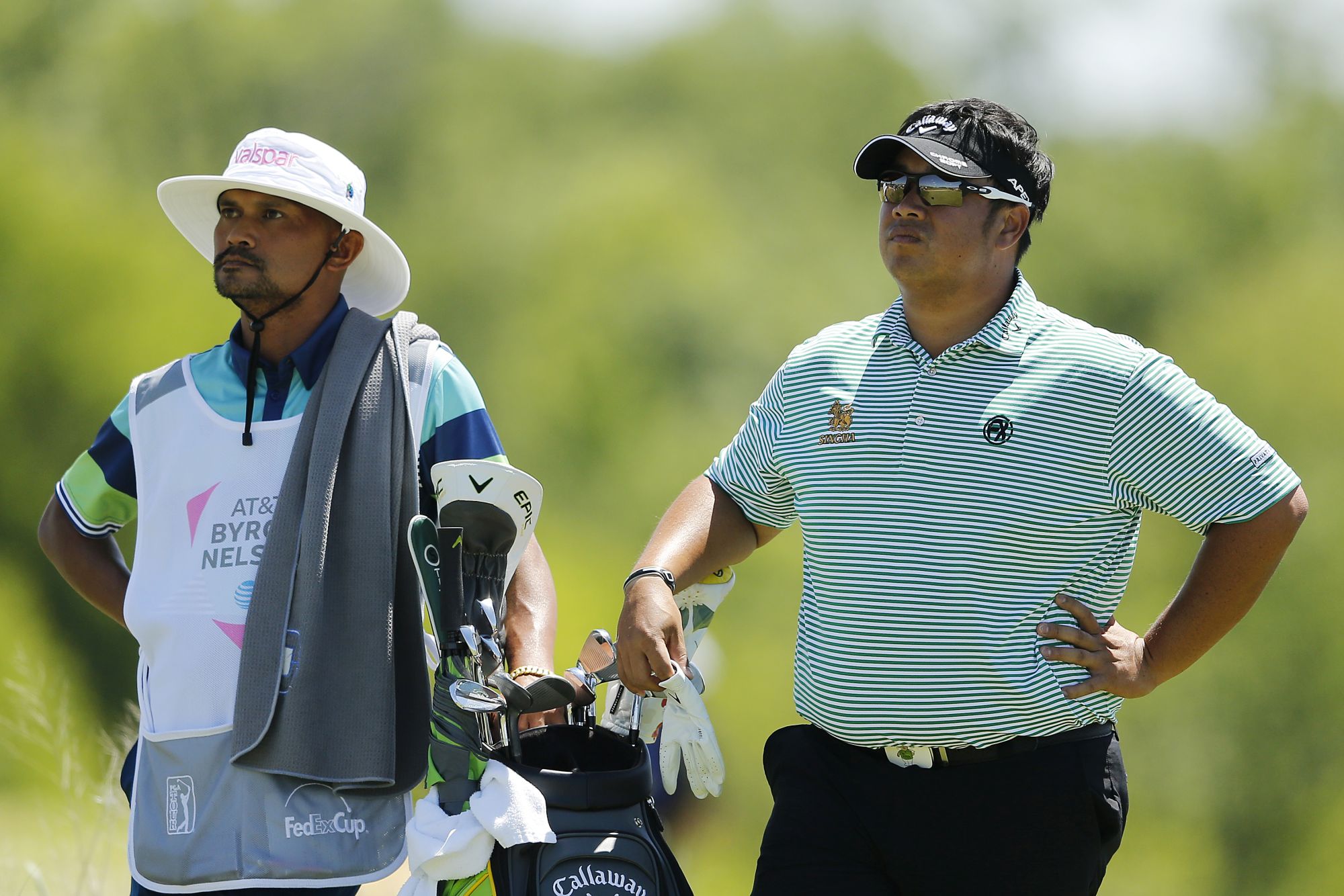
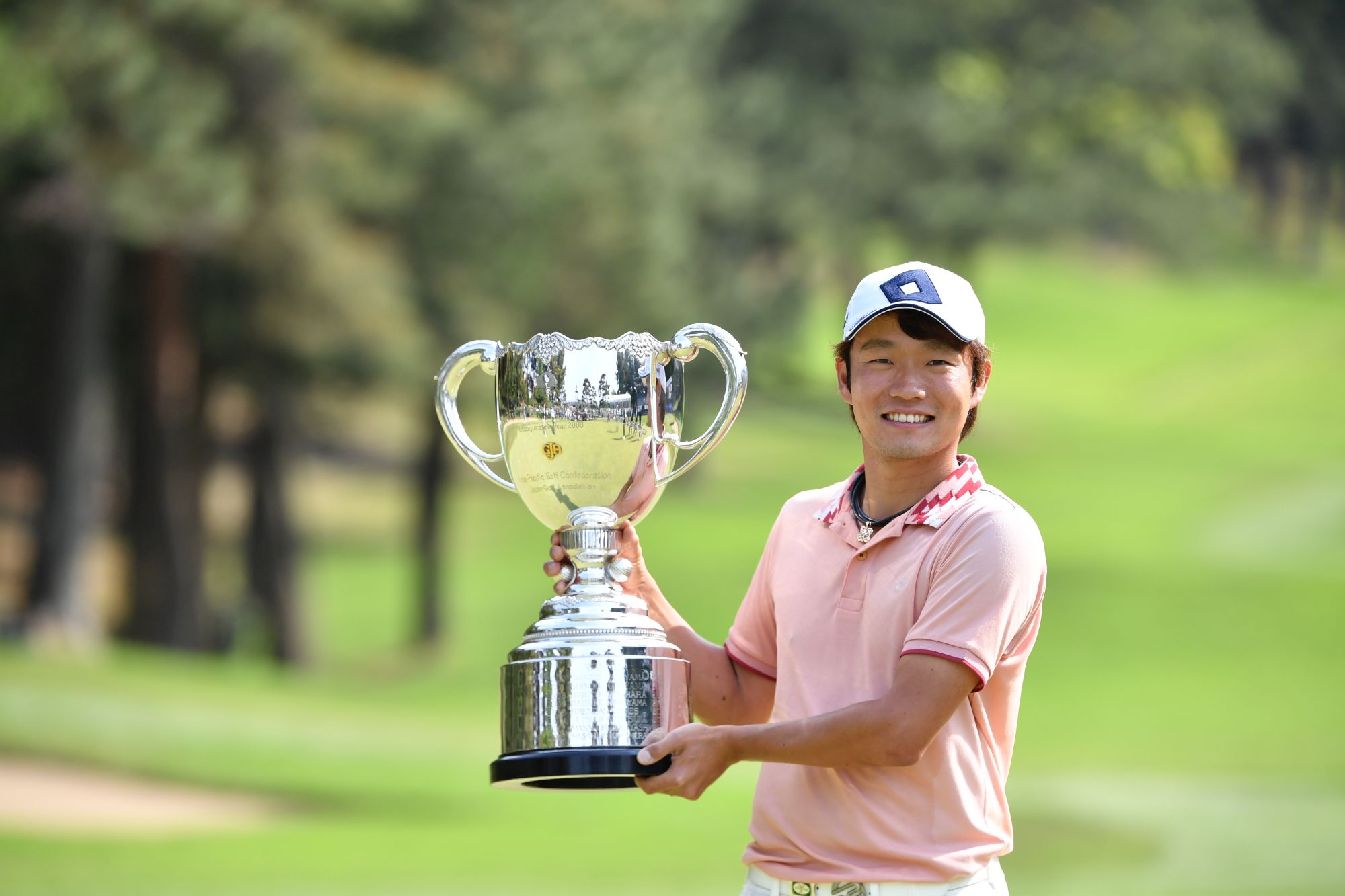
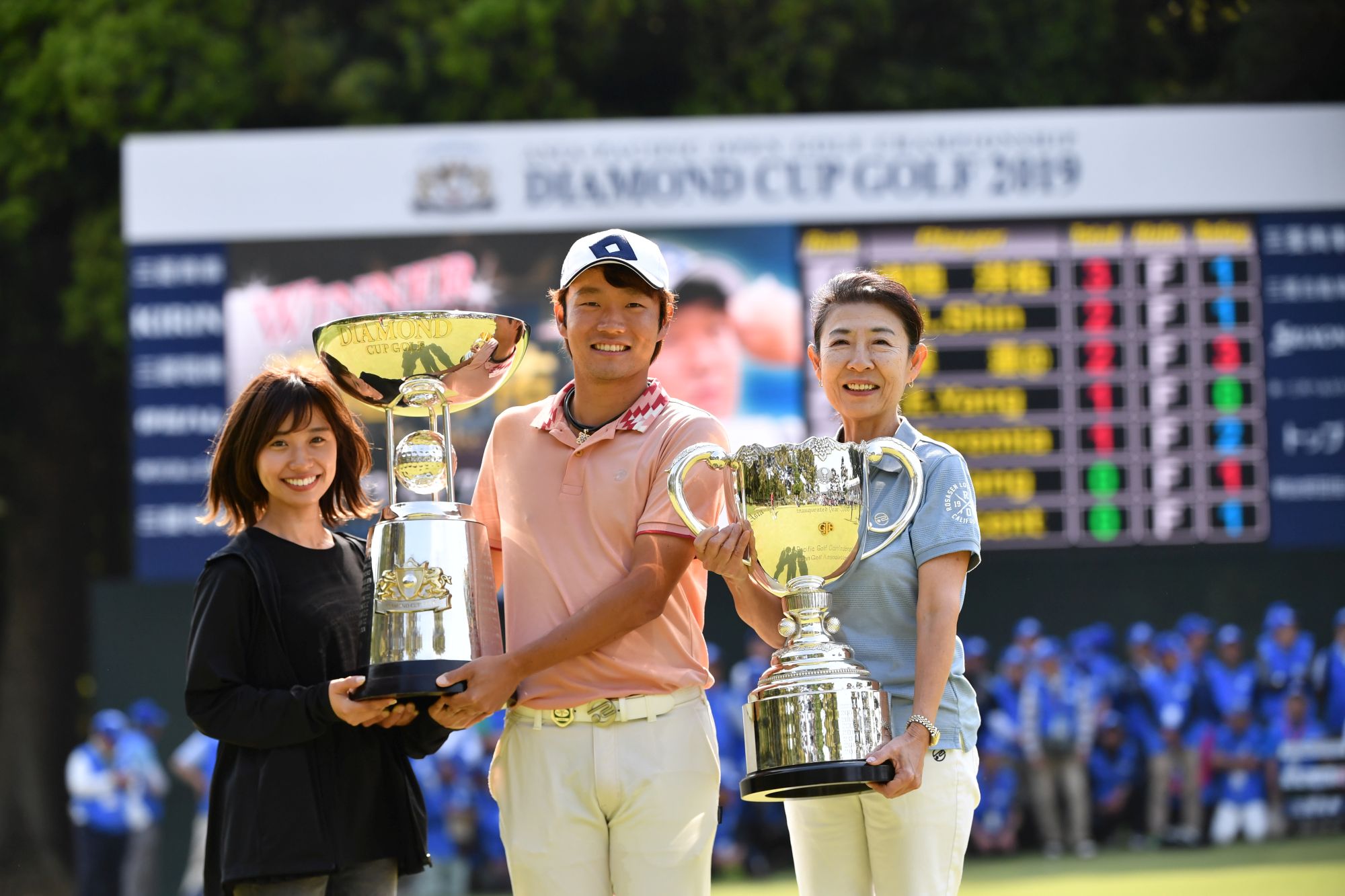
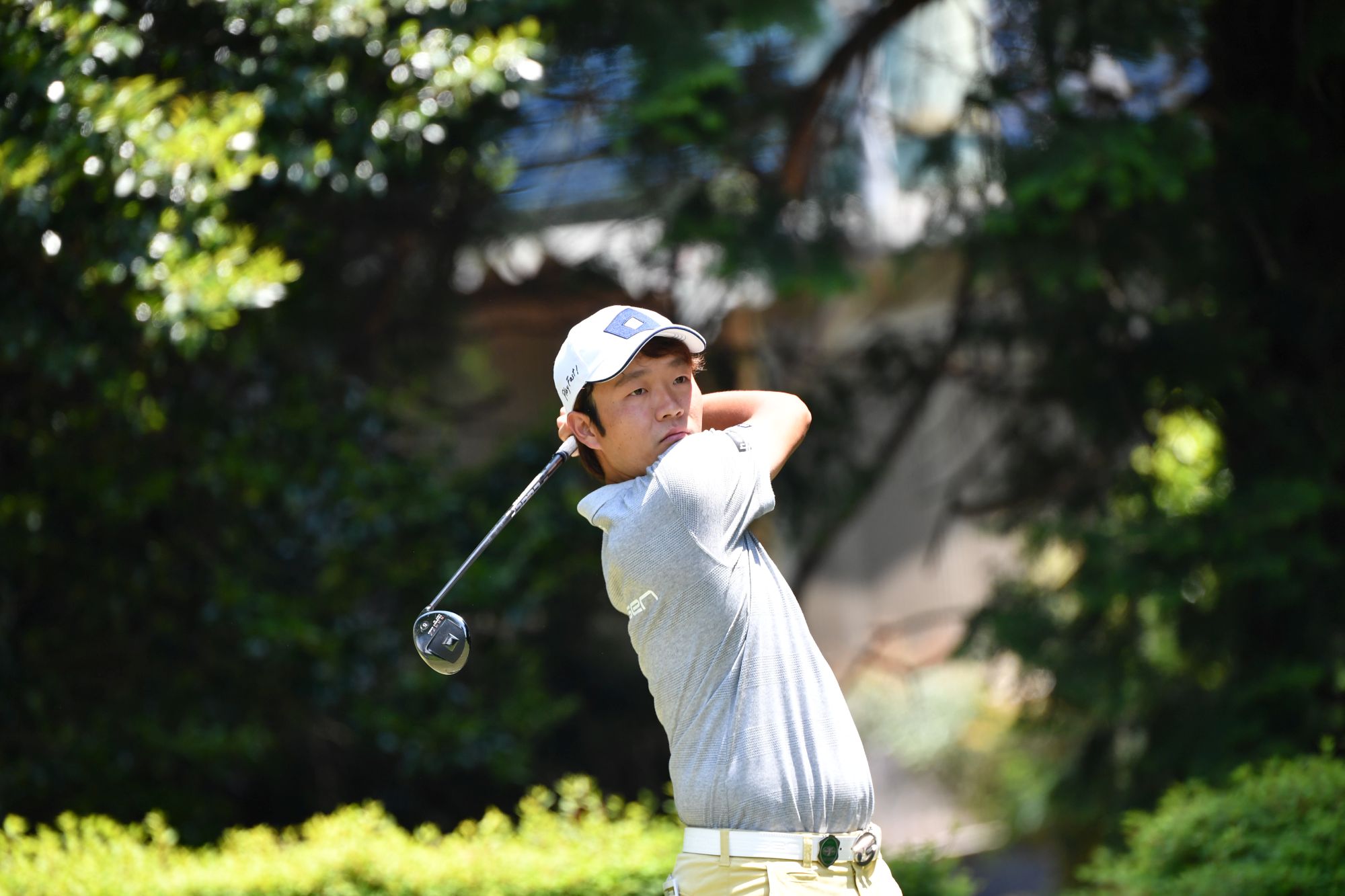
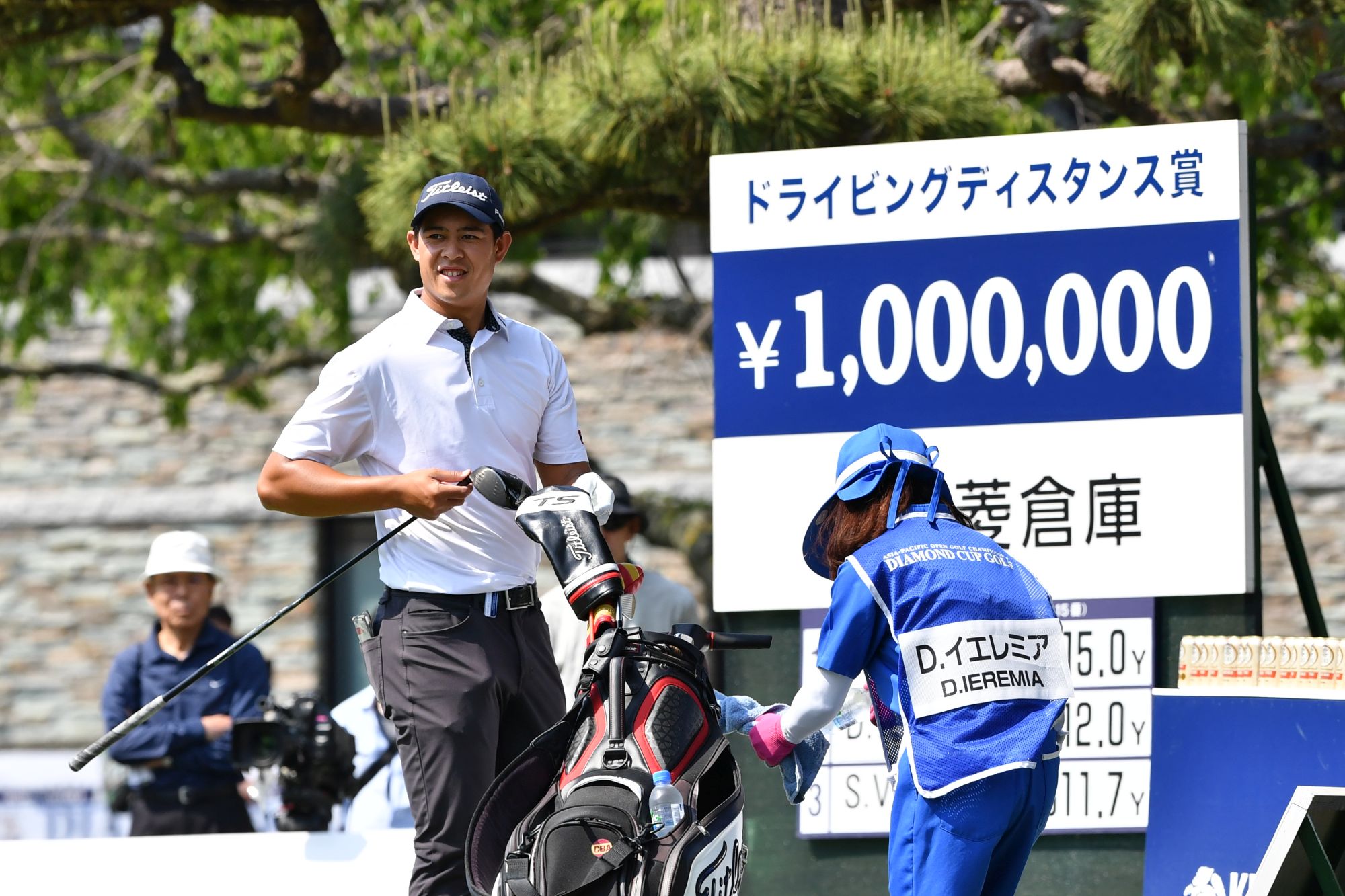
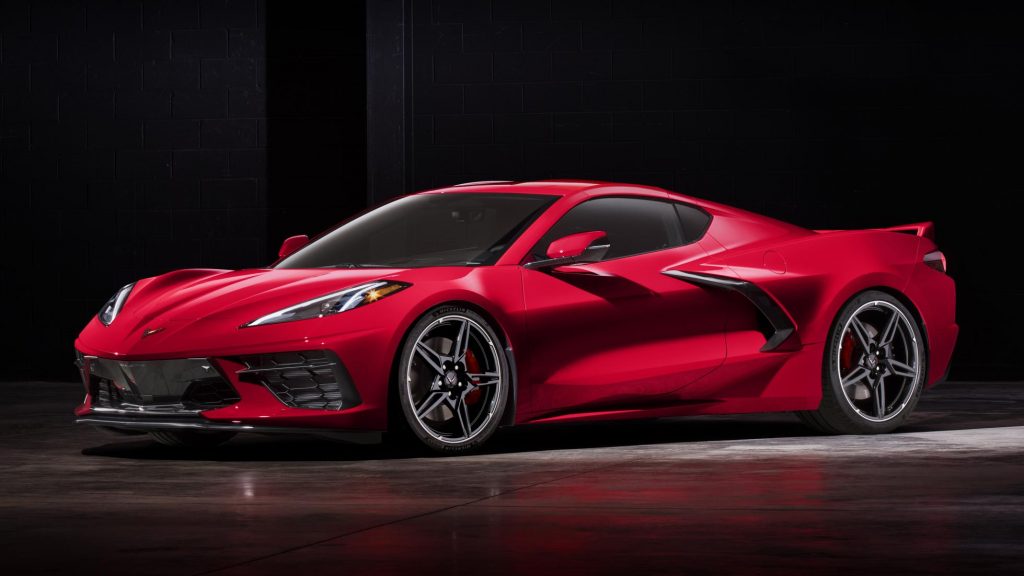
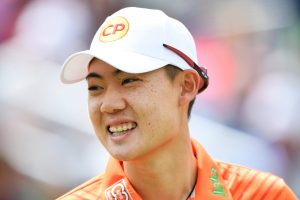

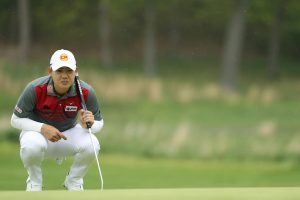
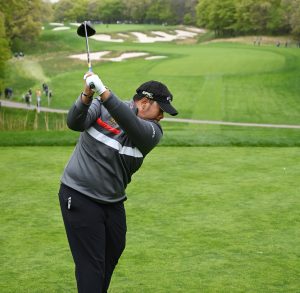
Recent Comments